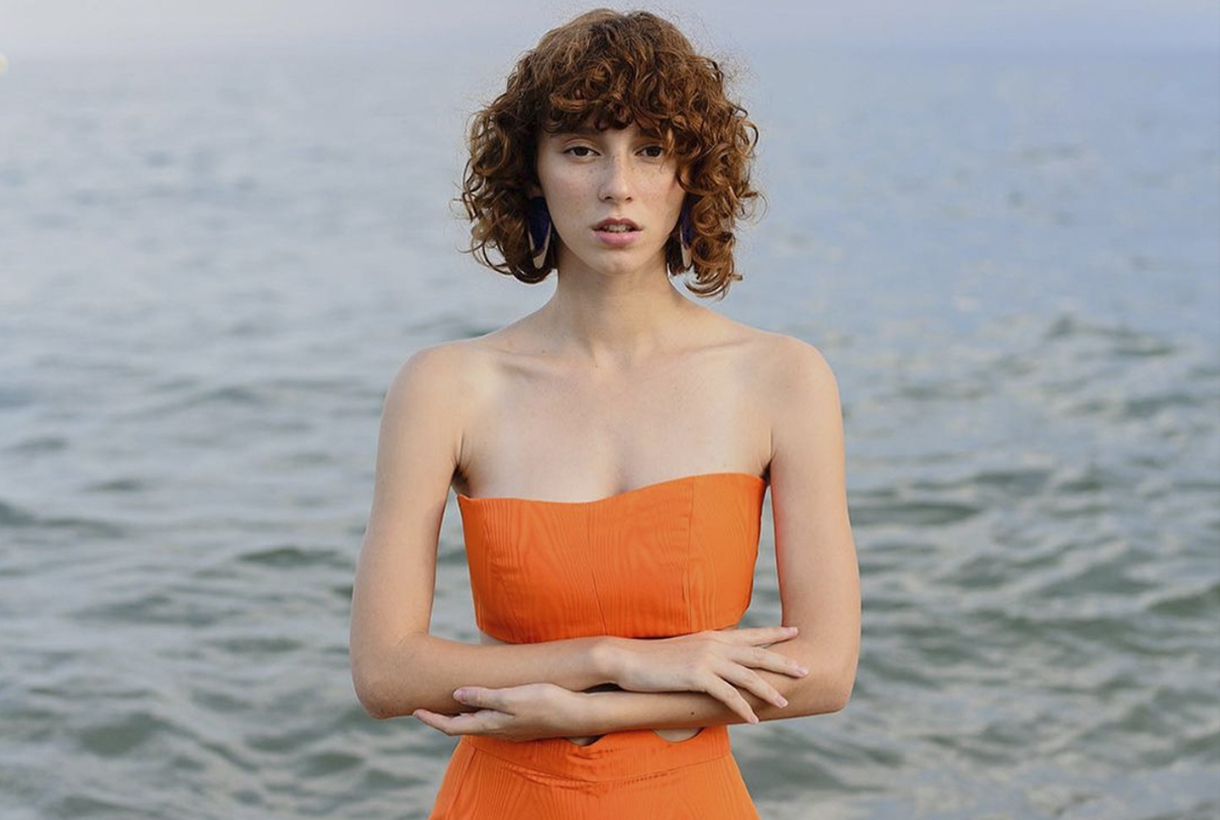 Orange is a more common colour than we think, although its role in history has always been relegated to the background. This hybrid shade between red and yellow provokes an immediate reaction when recognized. It activates, stimulates, surprises and entertains. Not surprisingly, this striking colour is always associated with the unconventional. Its uniqueness has played an important role in art, history and design. Since ancient times orange was present in Ancient Egyptian rituals, it has been considered a sacred colour in various Asian cultures and has come to fall in love with artists such as Vincent van Gogh and Toulouse-Lautrec who used orange in their paintings. We reveal some anecdotes about this exotic colour, often underestimated.
Orange is a more common colour than we think, although its role in history has always been relegated to the background. This hybrid shade between red and yellow provokes an immediate reaction when recognized. It activates, stimulates, surprises and entertains. Not surprisingly, this striking colour is always associated with the unconventional. Its uniqueness has played an important role in art, history and design. Since ancient times orange was present in Ancient Egyptian rituals, it has been considered a sacred colour in various Asian cultures and has come to fall in love with artists such as Vincent van Gogh and Toulouse-Lautrec who used orange in their paintings. We reveal some anecdotes about this exotic colour, often underestimated.

Orange in ancient times
The ancient Egyptians were the first to use a shade between yellow and orange that they extracted from the mineral realgar to decorate their tombs. The pigment that was extracted was toxic – it contains arsenic – and was used by the Chinese to drive away snakes, as well as being used in the country ‘s traditional medicine . Another related mineral, orpiment was also used as a pigment and was considered a highly valued trade commodity in ancient Rome. In the Middle Ages the orange pigment was used during the Middle Ages in manuscripts.
In Asia, orange was considered a symbol with different interpretations depending on the culture of each country. This tonality is present in many of the Asian religions. In Buddhism, orange is a sacred colour: it is considered the tone of enlightenment and the search for knowledge and for this reason, the clothing of Buddhist monks is traditionally of this colour. For Confucianism, orange symbolizes the colour of transformation. In Hinduism, the dress worn by Krishna – one of the most revered personified deities – is always in this brilliant hue. The name of the colour in India and China derives from saffron which in turn was the most expensive dye in the two countries. These Asian powers considered that orange represented the perfect balance between the perfection of yellow and the power of red.

A nameless colour
In Asia, orange was a revered hue. On the other hand, in Europe the colour did not have a name until the 16th century when Portuguese merchants brought from India and China the most exotic fruits of the time: oranges and tangerines, tinged with a colour that Europeans called reddish yellow until then. This striking colour imported from the Far East via orange trees was named after the fruit itself. Orange in Spanish, orange in english, arancia in italian and orange in Portuguese.
Another curiosity: today orange is a colour that connects on a psychological level with the world of flavours and is pleasing to the eye when linked to food. Peaches, apricots, mangoes, carrots, prawns, prawns, salmon, pumpkins, curriesﻗ۵ Orange can be an appetizing colour, right?

Orange in art
In Western European art, the use of orange became common as from the 19th century, when the first synthetic orange pigment called chrome orange was produced. This tone was a favourite of Pre-Raphaelite and Impressionist painters, who made use of colour to capture the effects of natural light. Artists such as Monet, Gauguin, Renoir, and Toulouse-Lautrec used colour extensively to elicit feelings of warmth, escapism, and playfulness. If there is an artist who was directly linked to the colour orange, it was Vincent van Gogh, who through painting mixed his own shades of orange and used them in contrast to the blues and purples characteristic of his work.

A seasonal colour in 2022
Although Pantone crowned Very Peri lilac as the colour of the year in 2022, the truth is that the fashion industry seems to have set its sights on a more intense and vital hue to lift the spirits. On catwalks through the summer and pre-fall collections , on the street style of fashion weeks , in the windows of the big firmsﻗ۵ orange has emerged as one of the star shades of the season in all its possible ranges.
Orange has been present in the current SS22 collection by Christian Siriano, Collina Strada or Proenza Schouler, transmitting optimism and joy to the clothes presented, but it is in the transition collections that it gains more strength. For example, Erdem is one of the firms that has opted for this colour, but in its softer versions such as boiler orange for satin dresses with black motifs and looks that play with textures and use the same tone. For its part, Chloﺣ۸ has opted for pastel shades giving it a less aggressive look. Oscar de la Renta has given orange reddish nuances, always accompanied by other colours or in bag format. Instead, Gucci has opted this season for a vitamin orange that dyes a multi-layered skirt in the same tone.

The namarillo is once again stepping strongly on the catwalks. A hybrid shade halfway between orange and yellow that became popular in 2016 among the spring collections and caused a furor due to its showiness and luminosity, being the summer shade at the time. Now Prabal Gurung has recovered this vitamin tone and has incorporated it into a large part of the looks of its latest collection. In a slightly more subdued tone, Staud has turned it into knitted sets with microshorts and Chanel into jumpsuits that are the hallmark of its creative director, Virginie Viard .

How to combine it?
Sometimes what is seen on the catwalk does not necessarily end up being worn on the street. And orange seduces at first sight, but it is not an easy colour to wear nor is it discreet. Still, the street style of the fashion prescribers or the looks exposed by the celebrities in the network carpets are the best reference to demonstrate the chromatic possibilities that orange has in the wardrobe.

The easiest way to get started in the colour orange is to do it in small doses through a single garment or simply relegating it to accessories. The tones that always go well with orange are the neutral ones: white, black and beige tones or makeup that creates a base effect. On the other hand, if your level of daring is high, orange looks great in a total look through dresses, jacket suits or combinations of tops with skirts. As for risky combinations that enhance this vitamin colour, there are some that are often repeated on the catwalk that flow due to their contrast: orange with fuchsia for maximum daring; orange with intense green to play with the complementary ones; orange with light blue or pale pink to reduce intensity; orange with purple to claim prominence; orange with gray for rainy days, or obviously, orange with orange for a harmonic visual game. This colour accepts more shades than you would have imagined!
Finally, we show you some of our most vitamin-rich fabrics for the new season. What do you imagine designing with them?




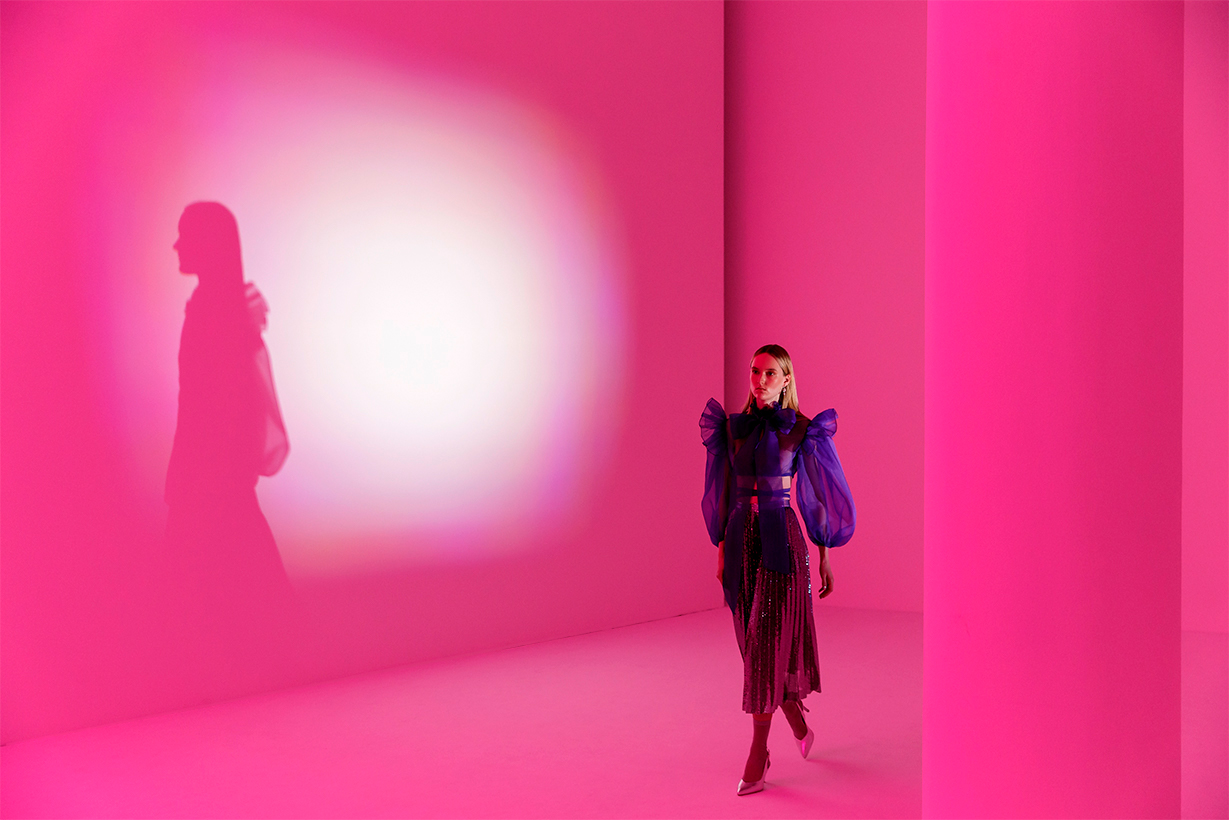 April is the month of fashion in Barcelona. Prior to a new edition of Barcelona Bridal Fashion Week, a week ago saw the start of the latest edition ofﺡ 080 Barcelona Fashion, with 22 virtual parade shows and designers who presented the new season in the Macba, within the rationalist building designed by the architect Richard Meier. A new staging of the imaginative creativity exhibited by brands via Fashion Films, seasonal collections that can be followed visually on the website of the Catalan catwalk. Gratacﺣﺏs has also followed the latest fashion trends to check once again how our fabrics have taken shape thanks to the designers who habitually trust in us: Avellaneda, Eiko Ai, Menchen Tomﺣ۰s, Yolancris and Victor Von Schwarz. We review the new creations and some of the key looks.
April is the month of fashion in Barcelona. Prior to a new edition of Barcelona Bridal Fashion Week, a week ago saw the start of the latest edition ofﺡ 080 Barcelona Fashion, with 22 virtual parade shows and designers who presented the new season in the Macba, within the rationalist building designed by the architect Richard Meier. A new staging of the imaginative creativity exhibited by brands via Fashion Films, seasonal collections that can be followed visually on the website of the Catalan catwalk. Gratacﺣﺏs has also followed the latest fashion trends to check once again how our fabrics have taken shape thanks to the designers who habitually trust in us: Avellaneda, Eiko Ai, Menchen Tomﺣ۰s, Yolancris and Victor Von Schwarz. We review the new creations and some of the key looks.

Summer nights
Faithful to his hedonist philosophy the dandy Juan Avellaneda transposes us to tropical latitudes in his new summer collection to continue exploring the most relaxed elegance, inspired by warm paradises in the north of Africa. The central feature of the creation is via natural fabrics, luminous or fiery shades such as pink, orange and coral, and patterns that in general lack rigidity. There are also several models of jacket, the fetish garment of the brand of this Barcelona designer, which oscillate effortlessly between male and female wardrobes. The prints move away from the banal to embrace a Mediterranean version of delicateness that gives character to ethereal skirts and smoking-jackets which rebel against the boring. The garments evoke the practical elegance of Saharan and classic tailoring by those mid-century holiday-makers who immortalized Slim Aarons. Blouses caress the body and intertwine. Trousers dance and dresses cling to the skin or deploy fabulous volumes and flyers, another 100% Avellanedaﺡ detail. In Au rﺣ۸veil il ﺣ۸tait midi all the clothes combine with everything, they harmonize and flow for a perfect summer.

The warm sunlight
Eiko Ai dazzles us with Lucid Dreams, a radiant collection inspired by the vitality of solar energy. In addition to this inspiration Glﺣﺎ Lladﺣﺏ’s formula remains firm in each of her designs and consists of promoting feminine beauty by playing with delicacy and sensuality. And how does she achieve it? Via vaporous silhouettes, ethereal fabrics which give glimpses of skin and via evocative stamping that mixes sophistication without abandoning the casual and cosmopolitan spirit of this Barcelona company. The new summer creation from Eiko Ai enhances the kimono dresses, fluid blouses and two-piece combinations featuring transparencies, subtle glitter and faded prints with other florals that pay tribute to that mystical vision of woman as an urban nymph. The palette of the collection goes for positivism, summer life and golden light via intense oranges playing with the range of yellows, pinks and whites and brushstrokes of intense blue sky.ﺡ

Class is class
For his part, Menchen Tomﺣ۰s reminds us of the importance of inheritance in Old Money, a collection that is inspired by the way of dressing and living of American families who have managed to pass fortune, class and status from generation to generation. An aesthetics characterized by sophistication, the fusion between the classic and the contemporary and timeless elegance, far from the culture of logo and ostentation. With that interpretation the Barcelona company brings together garments such as dresses and midi-skirts, pinned wide trousers, voluminous poplin shirts with other sporty garments that could be used for a day in a country-club or dinner in a garden on a summer night. Regards fabric details there is no shortage of silks, organzas and tulle flowers in a vibrant chromatic palette: blue, lime green, yellow, fuchsia-pink and bright-red.

Fashion without gender
Victor von Schwarzﺡ is part of the new generation of young talents that bring creativity and freshness on the 080catwalk. This time, the designer Barcelona presented a collection inspired by the Asian Mafia films of the 80s and 90s, whose centre of operations was the red neighbourhoods of cities such as Taipei or Hong Kong. Victor von Schwarz is committed to fashion without gender. Therefore, the designer, inspired by oriental clothing, creates open pieces, which anyone can wear, regardless of sex or gender. The silhouettes of the new summer creational are divided into two blocks. The first is very bright, with volumes, drape and transparency features that give a glimpse of skin. The second, part of a much more square silhouette and with variations of the classic tailored jacket. In this collection the fabrics are characterized by their imaginativeness. Sequins are prominent, from Vichy print to bright degrade. We also highlight bright laminates based on viscose and tulles with silver prints. As for colours, pastel shadestones and splashes of colour are a feature of this genderless creation.

Black velvet
Yolancrisﺡ this time participated in the 080 Barcelona Fashion with her party collection, leaving aside her more experimental project Y Como. The new creation highlights the craft-work redolent of her own workshop itself where the accent is on velvet, flesh-colour and black. With regard to detail, velvet is mixed with golden threads, embedded French lace and macramﺣ۸s in an attractive combination. Binomies of colour also dominate: gold-black and white-black, and are separated with explosions of monocoloured dresses: red and powder pink. As for silhouettes, the collection brings together some classic pattern ideas combined with some more daring features, evident, for example, in the openings of the dresses. In general Yolancris’s creation aims to be timeless so as to offer an expansive wardrobe for special occasions.
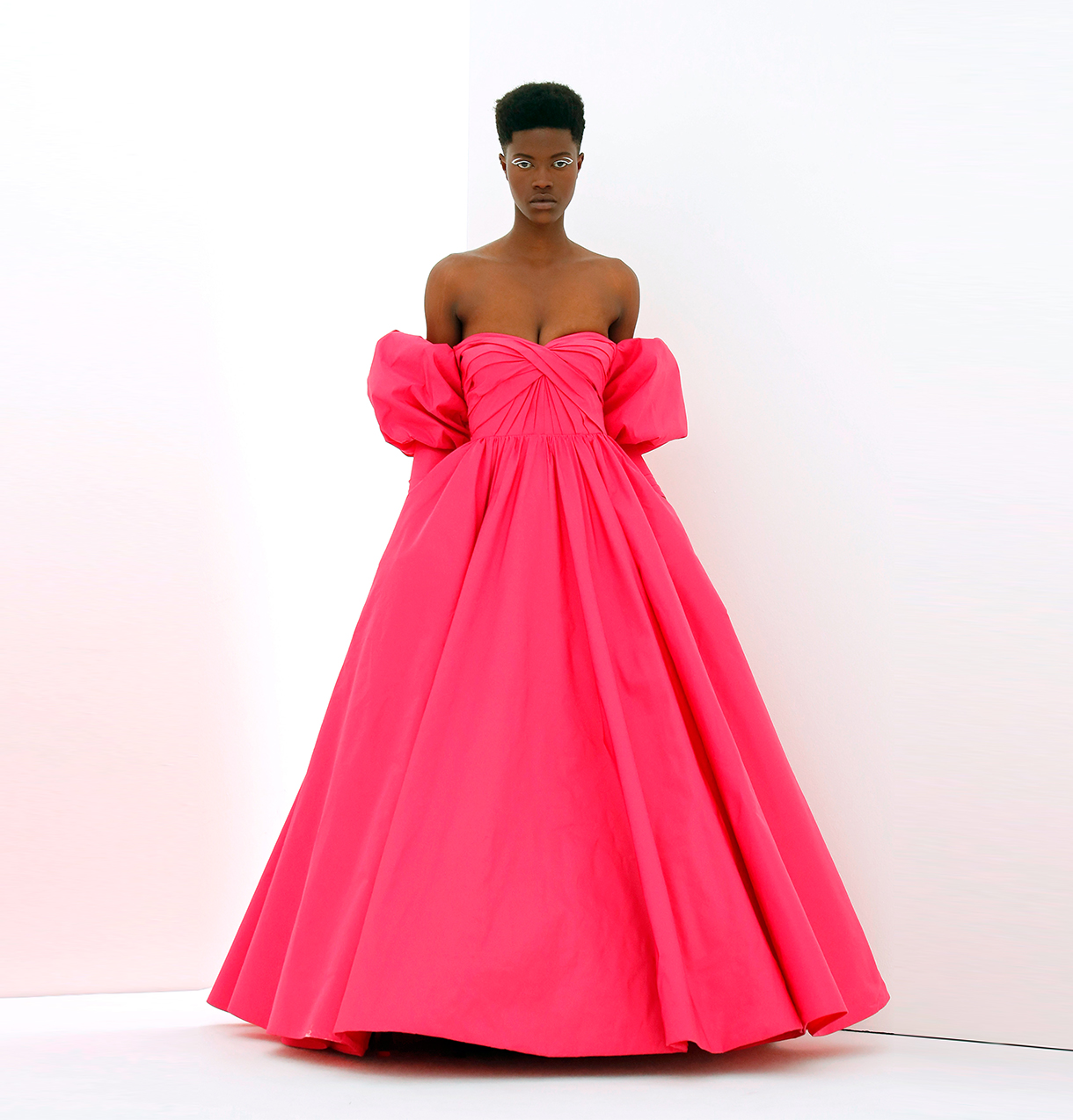
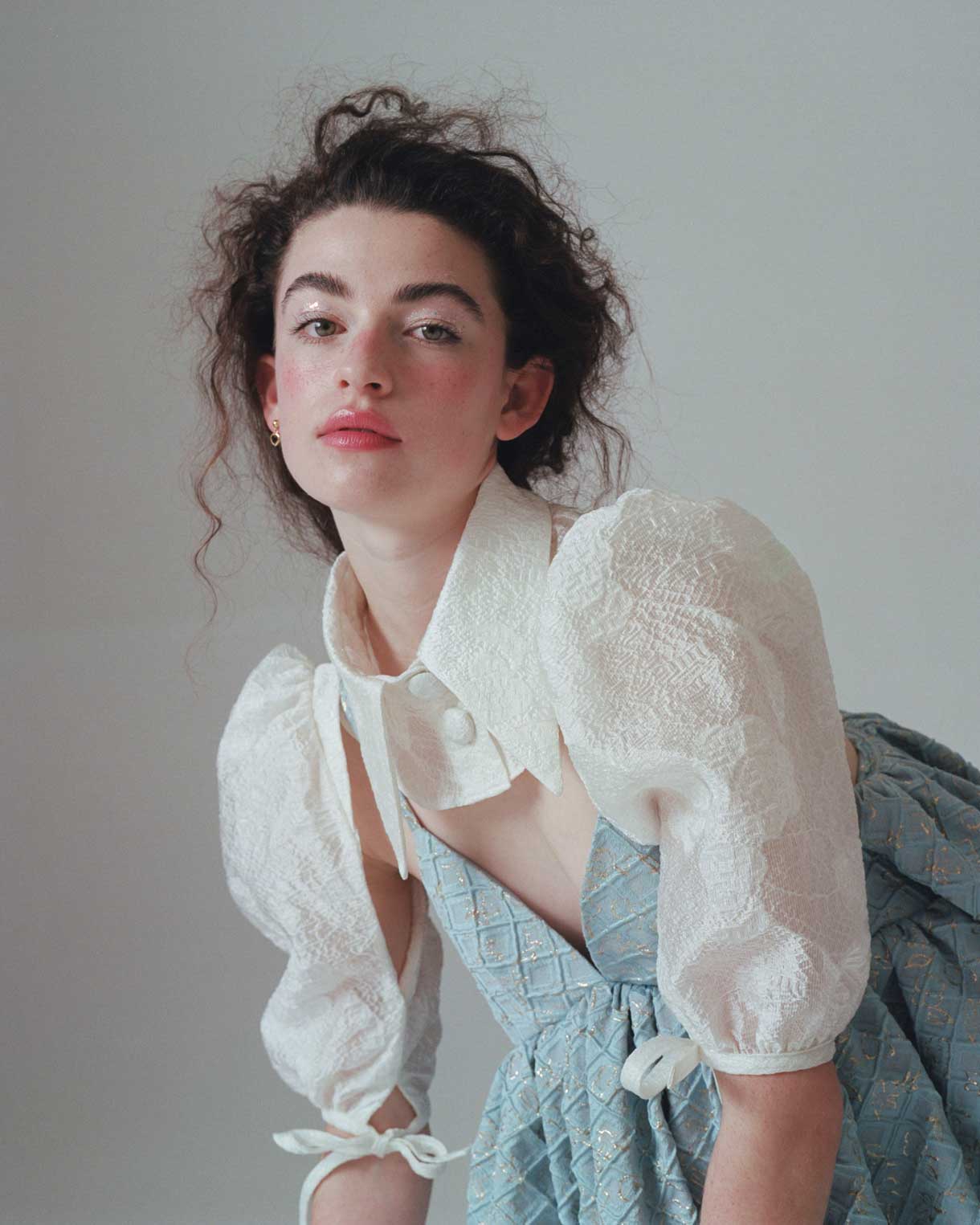
We have been following their path for a long time and have admired the creations of Quique Vidal (Valencia, 1996), alma mater of Becomely, a fashion brand with its own personality. If you follow us onﺡ Instagram, ﺡ you will have seen in our feed, those baby doll silhouette dresses in pastel tones and large volumes that we usually share from the young 26-year-old creator. Despite the naive spirit, Quique Vidal’s project has nothing to do with lightness or immaturity. Quite the opposite…
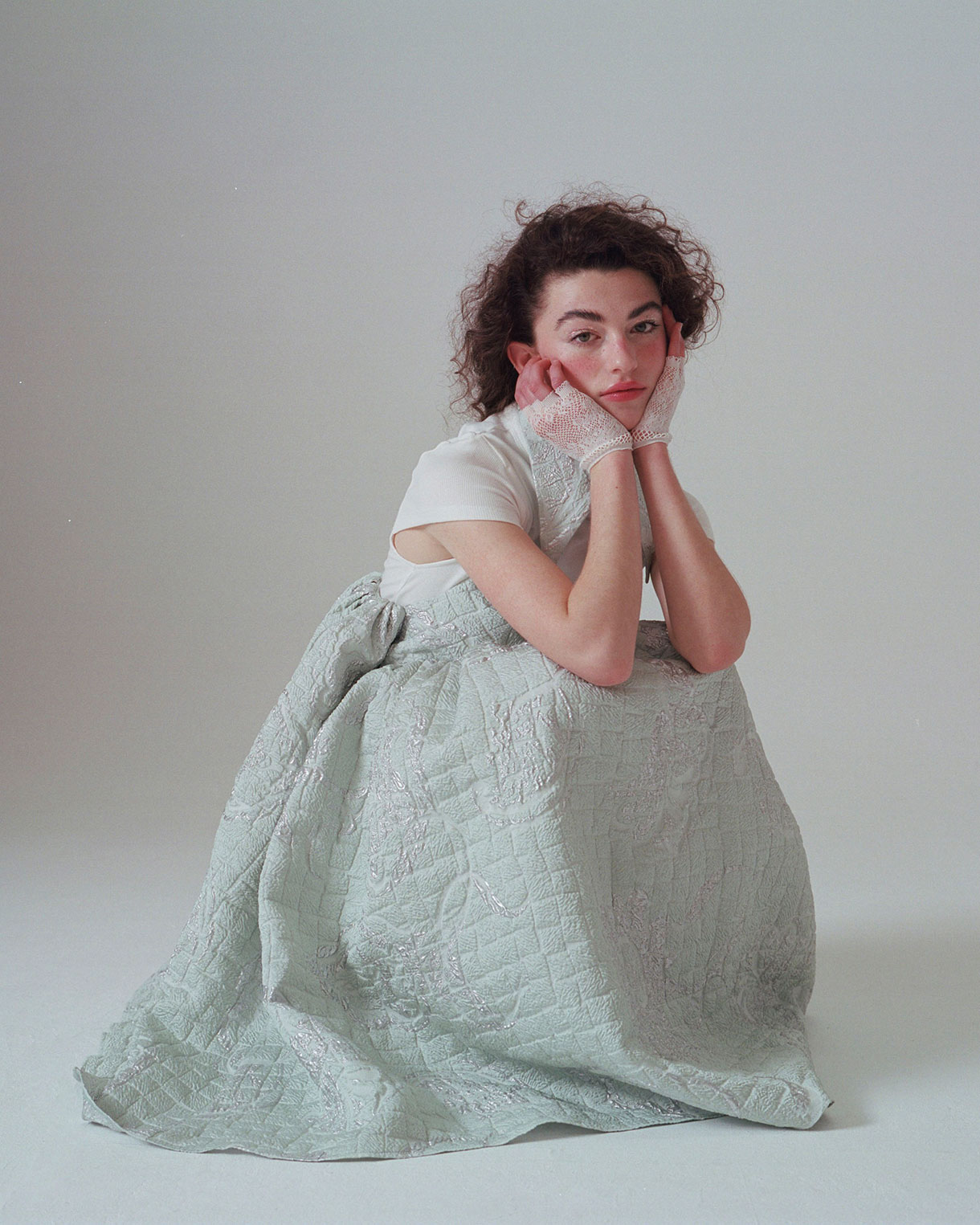
Beginnings are not easy
Becomely was officially founded in 2015. Previously, the young designer had done some work for several teachers who requested dresses for their graduation. That spontaneous start dressing anonymous women encouraged him to move to Madrid to make a living as a designer. He participated twice in Samsung EGO, the catwalk for emerging talents at MBFW Madrid. In parallel, Quique Vidal sold t-shirts, socks and also his famous biodegradable plastic costume jewelery made with 3D printing to cover part of the costs of producing and designing the collections presented. In fact, the designer currently combines his artistic work at Becomely with his other project, Estudio Cartulina, a company specializing in communication, brand consulting and production. The moonlighting artist is a reality for many young people in the world of fashion.
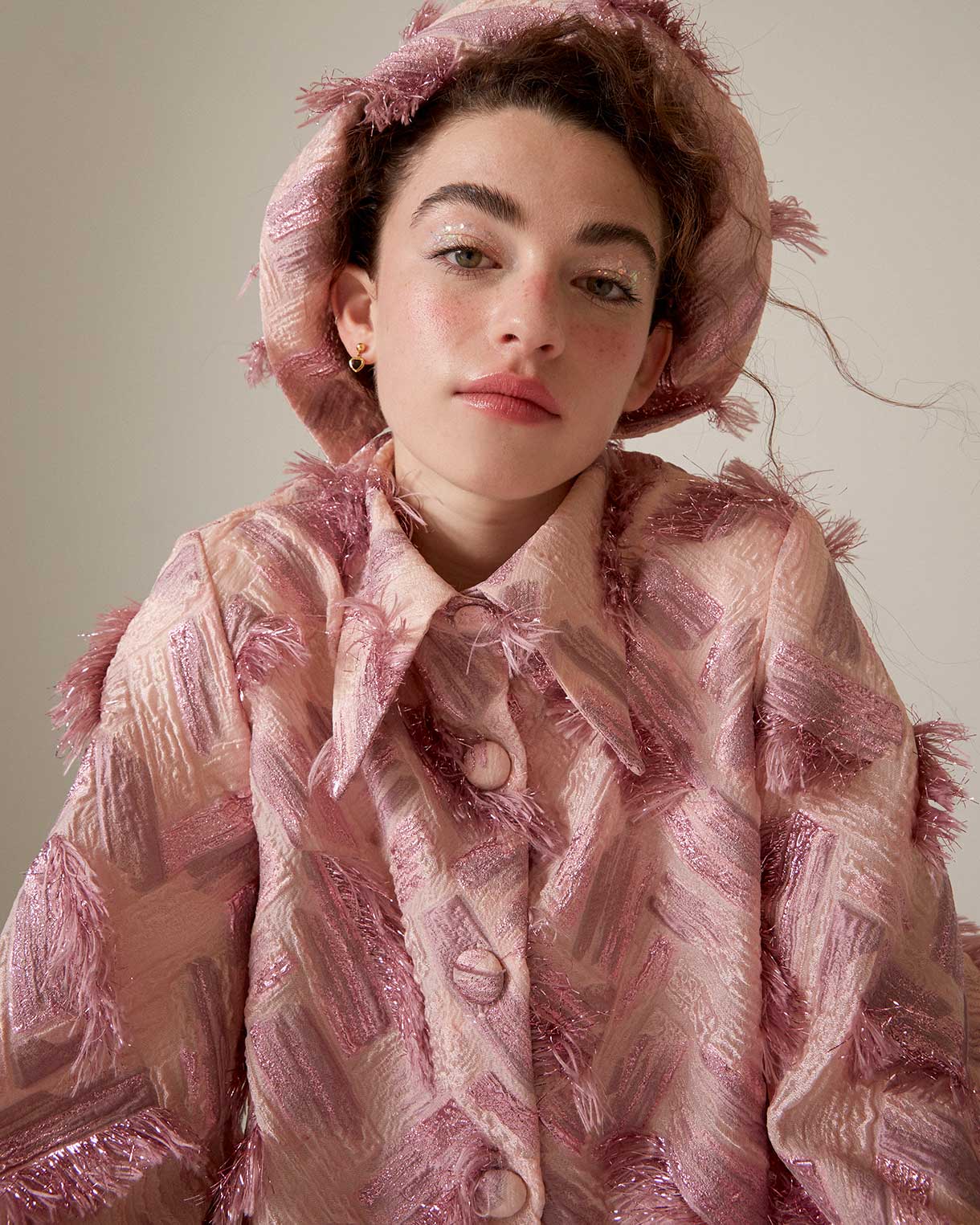
Craft and production on demand
Becomely is a sustainable, artisanal brand that creates intricate limited edition pieces that are produced on demand. The pandemic disrupted Quique’s business model to evolve towards new, more direct channels for consumers. If before they sold through the website and in some selected stores that included countries like Asia, now the Spanish firm focuses sales on social networks, especially on Instagram. This change allows greater contact with the clientele: a more personalized service can be offered and the budget can also be adjusted.
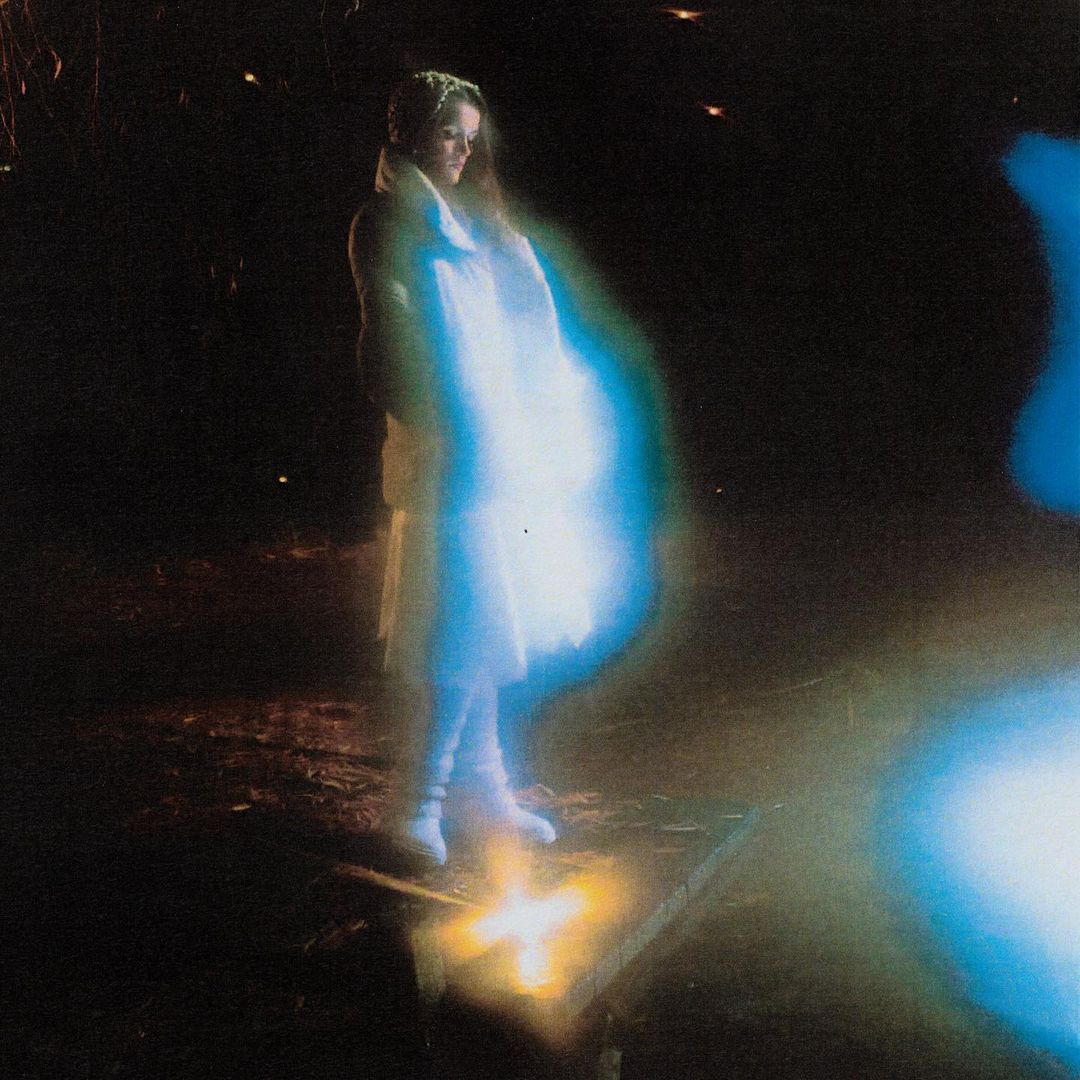
The design has not changed. Becomely maintains the emblem of the baby doll dresses with a V-neckline, puffed sleeves and volumes also in the skirt. A model that is repeated from the first collections and in which Quique Vidal is adding variations: large buttons, shirt lapels, different lengths… The fabric he uses to create his designs is also a differentiating element. Opt for eye-catching items: enigmatic Jacquards, tactile reliefs, details such as feathers, shiny motifs, fabrics with extra volume… always in pastel shades such as pale pink, baby blue, lavender or off-white. In fact, it is no mystery that Quique Vidal manages to magnify some of our most special fabrics each season. Becomely also takes advantage of the small scraps left over from his shirts and dresses to create new pieces such as bags, satchels or hats. A formula that take sustainability to its ultimate consequences.
Becomely’s designs have already hit the stage through artists like Amaia . The singer appeared in her latest video clip, Yamaguchi, wearing a white dress that follows the recognizable aesthetics of the brand and is made as we pointed out, with deadstock fabric : leftovers from suppliers or workshops. The actress Emma Suﺣ۰rez also noticed Quique Vidal’s creations and ordered a dress for a premiere that she had at the beginning of the year.
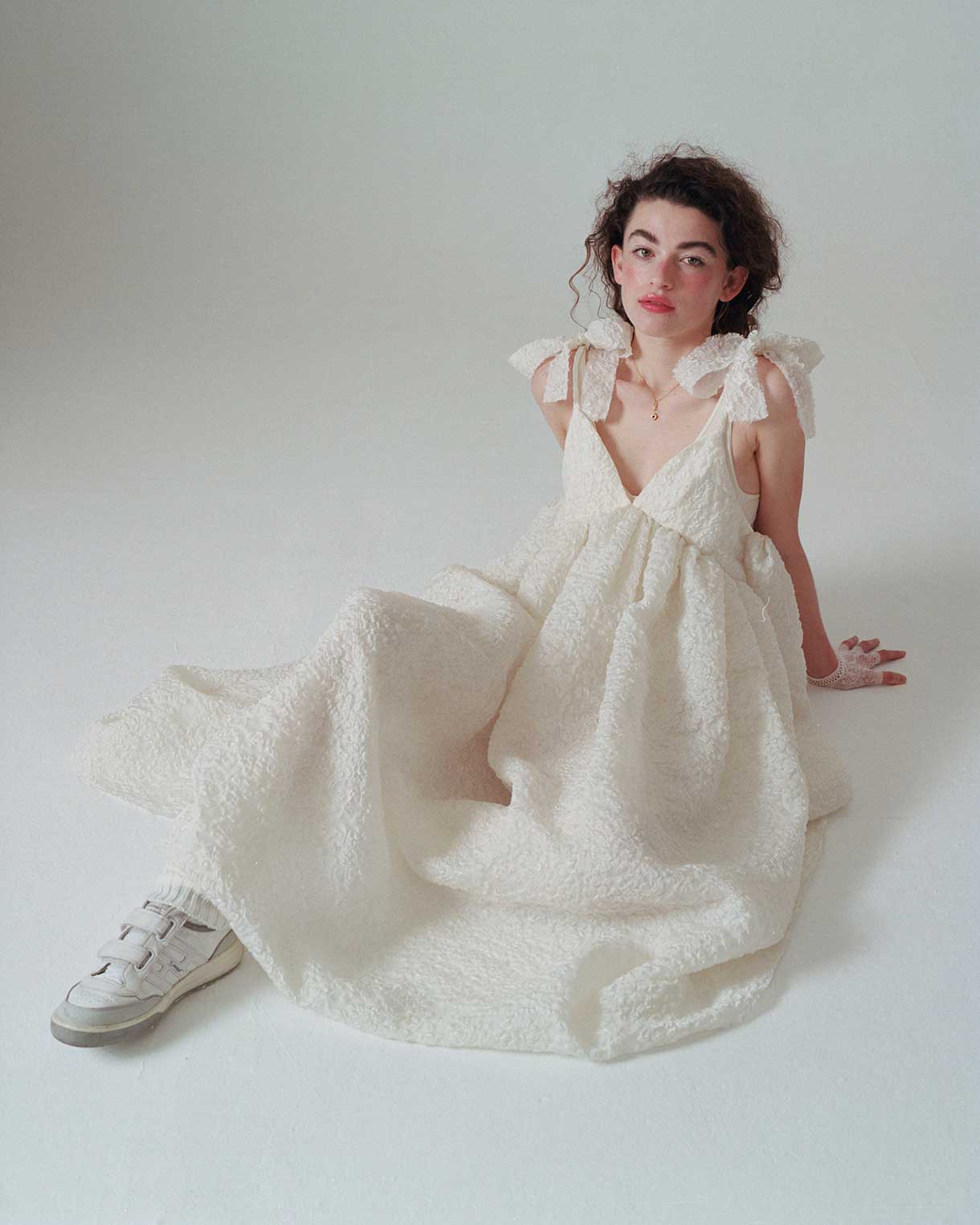
The Bride Becomely
Recently, Quique Vidal has dared to design a wedding dress that maintains the aesthetic codes of the brand. It is a flattering model that combines a minimalist silhouette with romantic elements and precious details. The dress is long with a V-neckline and straps dominated by huge bows. A voluminous skirt in embossed Jacquard fabric has just structured the ideal bridal design for millennial or Zeta brides . In fact, it is such a versatile model that it can be worn for a wedding, a special occasion or to add fantasy to a daily look, always depending on the footwear that is combined. What is clear is that there are fewer and fewer limits and barriers between formal or informal styles. Let each one interpret it in their own way!
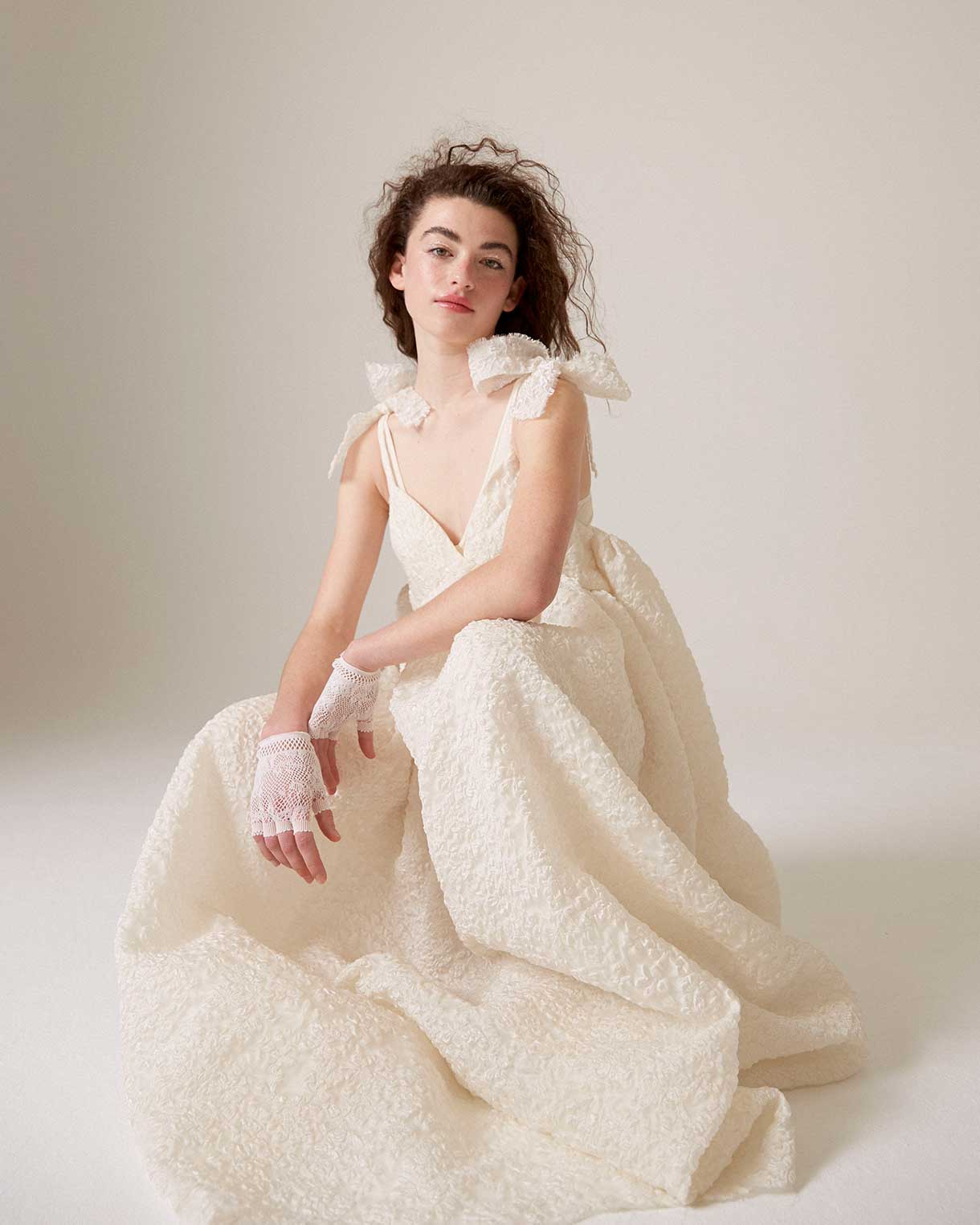
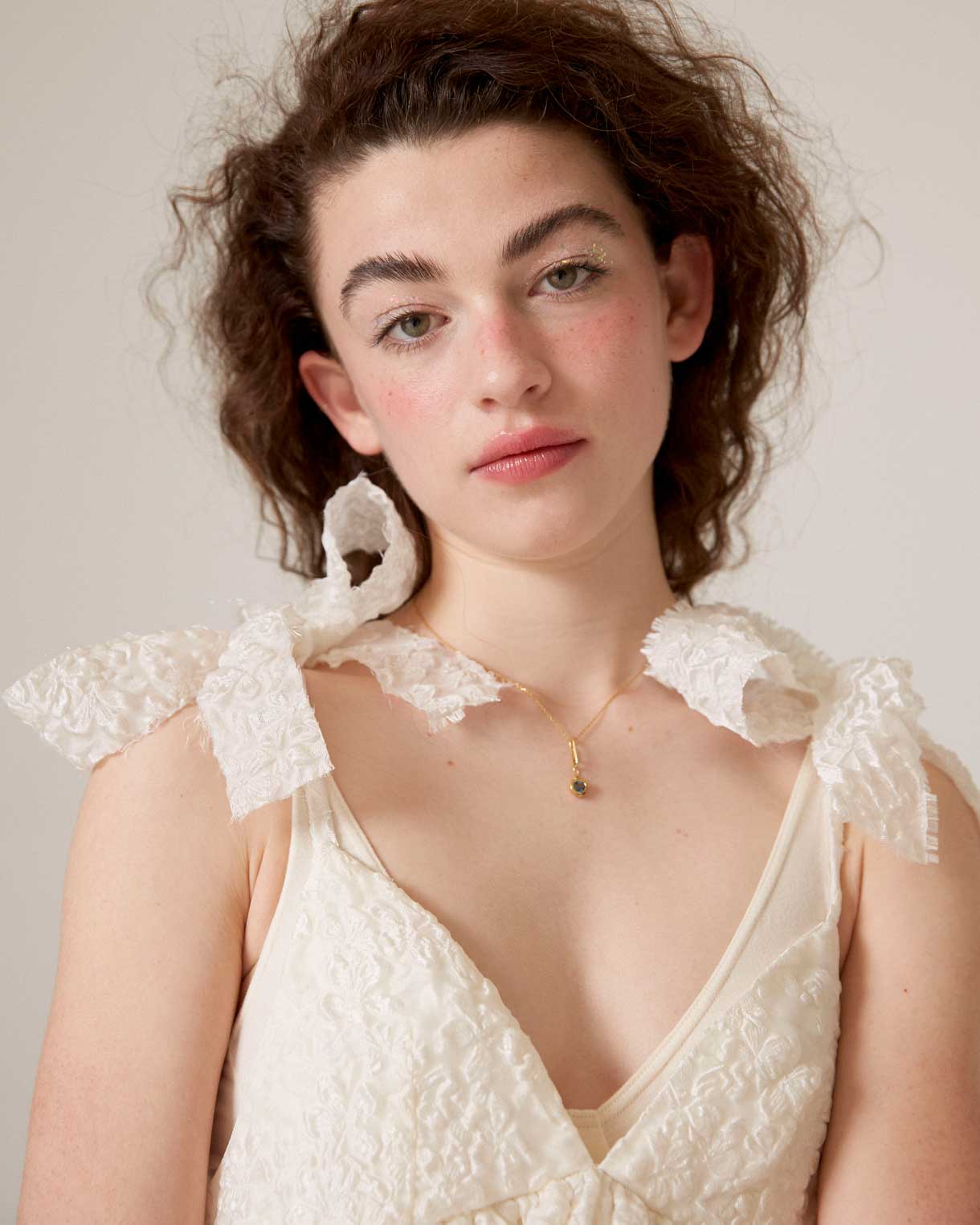
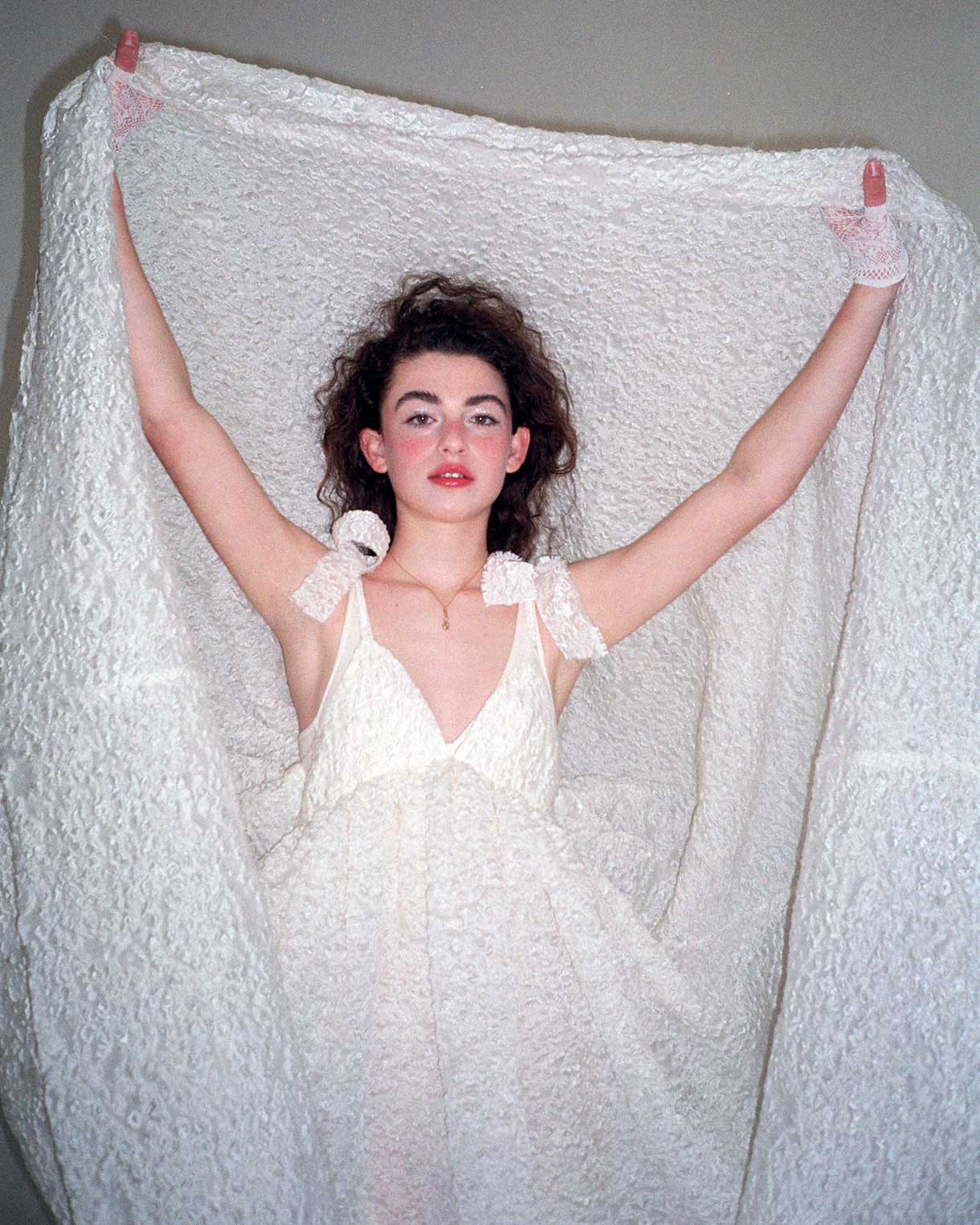
Miﻠrcoles 09 febrero 2022
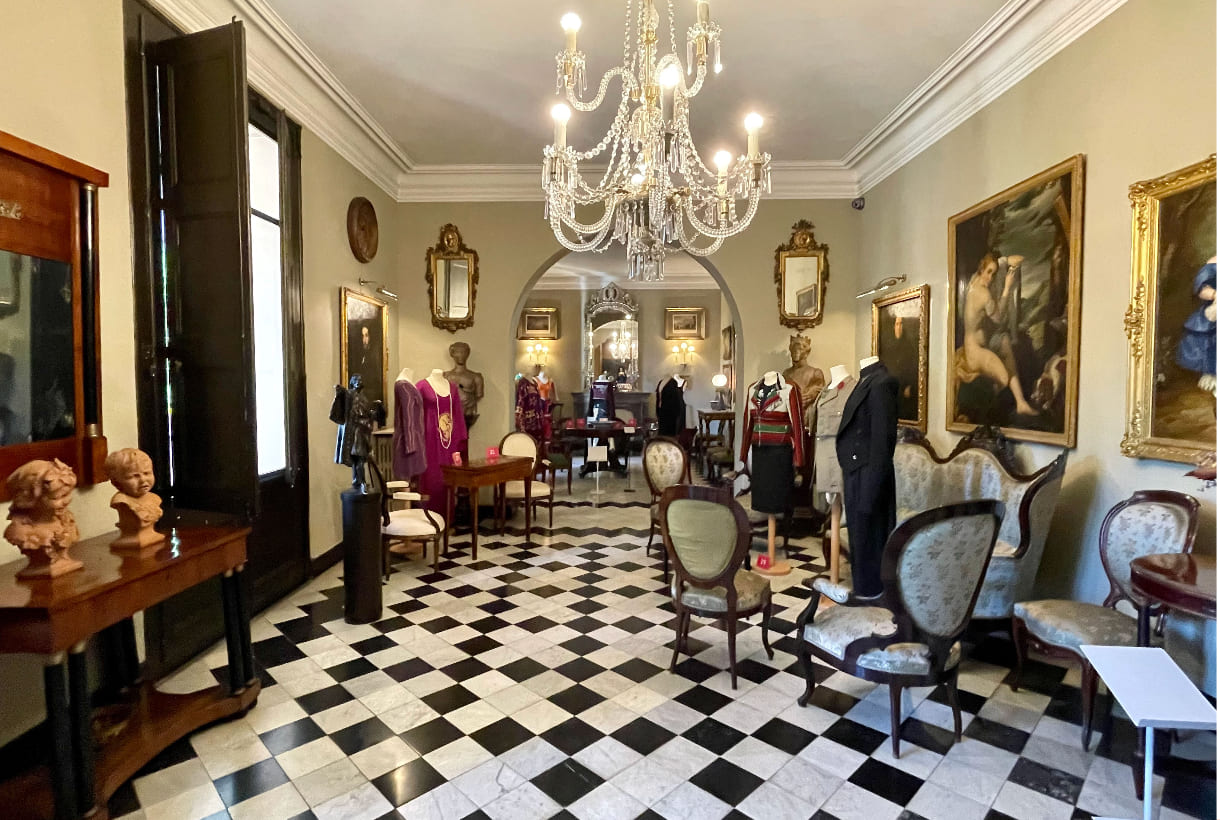 Anﺡ enfant terribleﺡ is a precocious genius with brilliant ideas, but with a rebellious and transgressive attitude, whose creations are innovative and offer a new disruptive vision, far from the traditional, orthodox or conventional.ﺡ John Galliano, Jean-Paul Gaultier, Alexander McQueen are some of the most internationalﺡ enfants terriblesﺡ in fashion.ﺡ In our country there are also provocateurs of the thread and the needle.ﺡ Some of the most notorious names are recovered by the Fundaciﺣﺏ Antoni de Montpalauﺡ together with the Fundaciﺣﺏn Rocamoraﺡ in a new exhibition entitled ‘Daviddelfﺣn and otherﺡ enfants terribles of fashion’ that opened on February 6th in Barcelona.ﺡ The exhibition consists of an exhaustive compilation of the work of the designer from Malaga, unique in Catalonia, together with the groundbreaking and provocative trajectory of other Spanish designers, from the 1980s to the present.
Anﺡ enfant terribleﺡ is a precocious genius with brilliant ideas, but with a rebellious and transgressive attitude, whose creations are innovative and offer a new disruptive vision, far from the traditional, orthodox or conventional.ﺡ John Galliano, Jean-Paul Gaultier, Alexander McQueen are some of the most internationalﺡ enfants terriblesﺡ in fashion.ﺡ In our country there are also provocateurs of the thread and the needle.ﺡ Some of the most notorious names are recovered by the Fundaciﺣﺏ Antoni de Montpalauﺡ together with the Fundaciﺣﺏn Rocamoraﺡ in a new exhibition entitled ‘Daviddelfﺣn and otherﺡ enfants terribles of fashion’ that opened on February 6th in Barcelona.ﺡ The exhibition consists of an exhaustive compilation of the work of the designer from Malaga, unique in Catalonia, together with the groundbreaking and provocative trajectory of other Spanish designers, from the 1980s to the present.

The most extensive work of David Delfin
The monographic part dedicated to David Delfﺣn occupies the first floor of the Rocamora Foundation and brings together more than 60 pieces of clothing that review the designer’s collections, from 2001 to 2017, with some of the most emblematic works.ﺡ Along with the pieces of clothing, a selection of accessories such as bags and shoes is also included.
Although Diego David Domﺣngez Gonzﺣ۰lez, David Delfﺣn, had already carried out some previous experiments, his homonymous brand would be born in 2001 in a joint project with the Postigo brothers (Deborah, Gorka and Diego) and Bimba Bosﺣ۸, the designer’s muse and model.ﺡ This innovative project went beyond fashion, mixing theatre, music, painting, poetry, photography and cinema.ﺡ As a brand,ﺡ Davidelfﺣn debut in Barcelona on the alternative catwalk show Circuit with its first ‘Openin’ Nite’ collection.ﺡ A year later he make the leap to the Cibeles catwalk in Madrid with the proposal ‘Cour des Miracles’,ﺡ inspired by Luis Buﺣﺎuel’s films ‘Viriadina’ and ‘Belle de Jour’ and also in the painting ‘Los Amantes’ by Renﺣ۸ Margritte , painted in 1928, showing two hooded lovers kissing.
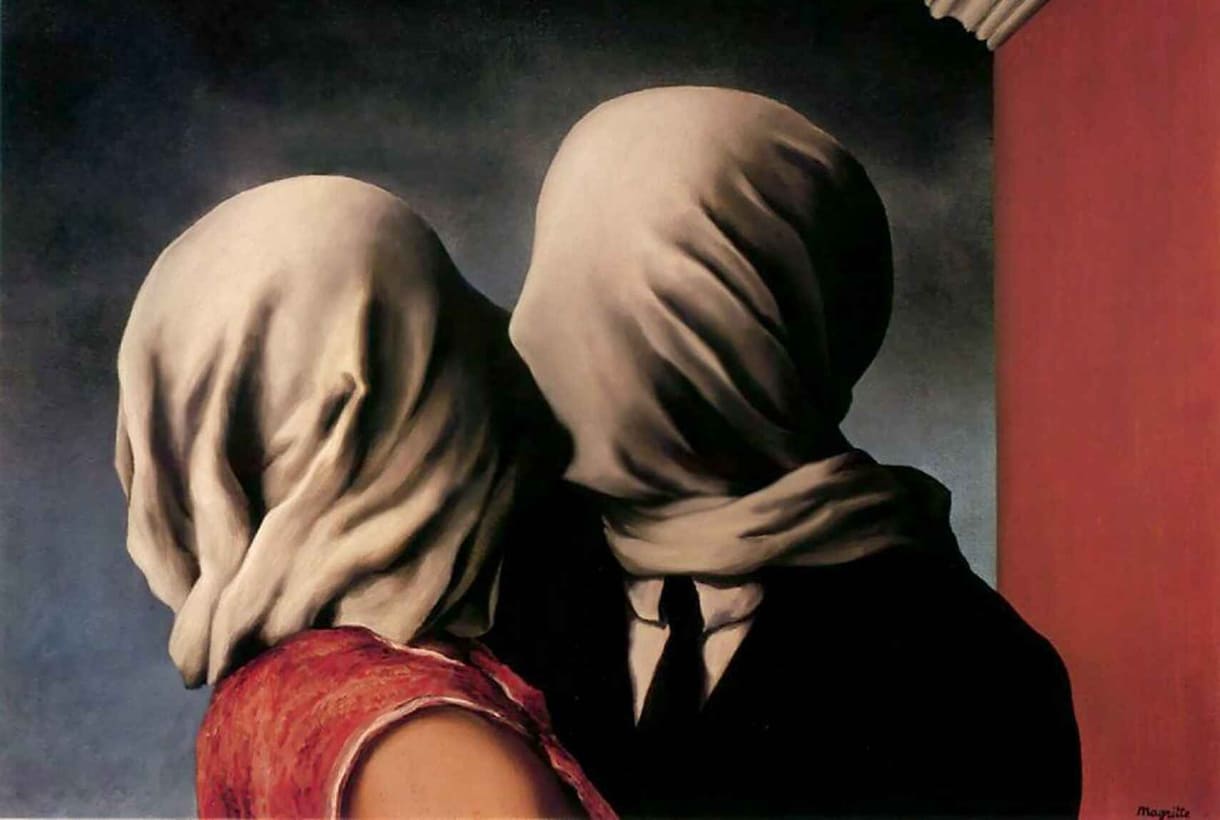
As a tribute to Magritte’s painting, the models paraded down the catwalk with hooded faces reminiscent of Arab burkas, ropes around their necks and large wooden rosaries, some garments made with sanitary bandages.ﺡ This parade was misunderstood and criticized in the media, perhaps for coinciding with the war in Afghanistan.ﺡ Despite the controversy, this show positioned the brand and a year later, Davidelfﺣn would receive the L’Oreal award for young designers.ﺡ From this moment on, the designer’s self-taught creativity had no limits: Bimba Bosﺣ۸ would be the indispensable protagonist of his fashion shows and among the public and their friends, they would become his best ambassadors.ﺡ The designer continued to present his collections at Cibeles and made the leap to New York in 2009 and 2010. The brand was also awarded at Marie Claire, Telva and in 2016, won the National Fashion Design Award.ﺡ Davidelfﺣn also participated in numerous museums, institutions and art galleries in Barcelona, ﻗﻗMadrid, Bilbao, Mﺣ۰laga, Venice, New York, Washington, Mexico, Tokyo and Moscow.ﺡ Unfortunately, the promising creator’s career was cut short in 2017 after an intense battle with brain cancer, a few months after Bimba’s death.ﺡ David Delfin was only 46 years old.
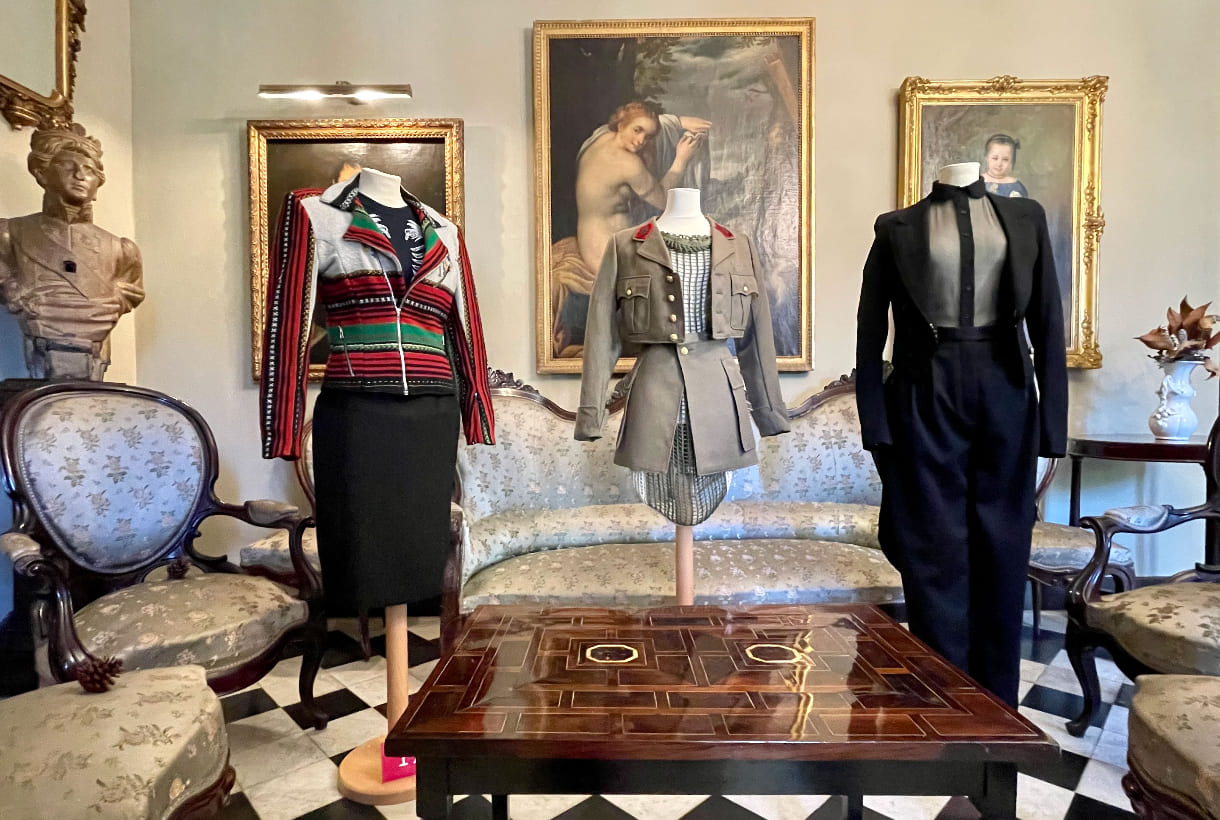
The other enfants terribles
The exhibition goes one step further and to accompany the tribute to Davidelfﺣn, the Fundaciﺣﺏ Antonio de Montpalau has chosenﺡ a series of designers who have also known how to break the mold and occupy the ground floor of Manuel Rocamora’s summer mansion.
Thus, this second part of the exhibition begins withﺡ Luis Fortes, the controversial designer of the 1980s in Barcelona with very daring proposals that even anticipated those that Thierry Mugler, a recently deceased French creator, would make shortly after.
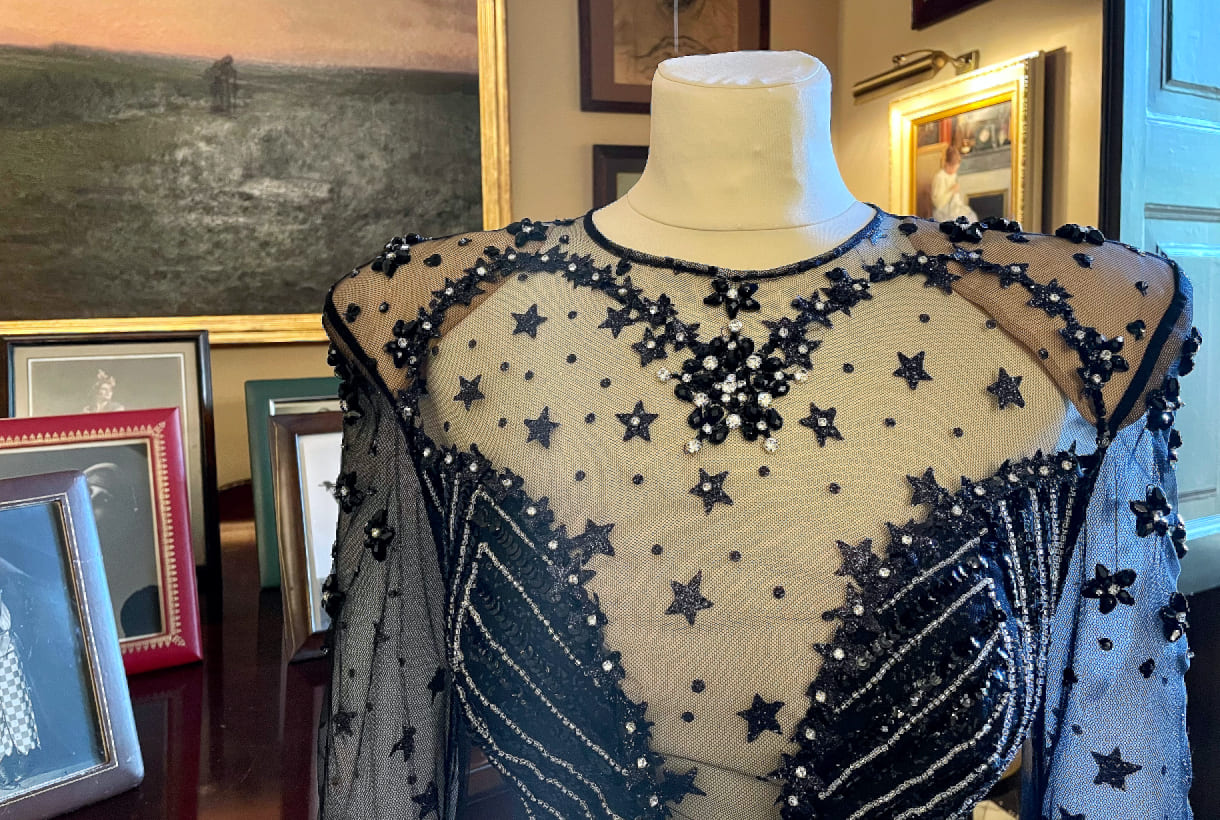
From Madrid in the 1990s, theﺡ Vacas Flacas duo, made up of Carolina Azcona and Miriam Cobo, would create a fuss at the Cibeles Catwalk with their garments made of cloths, gloves, towels, socks, zips or scarves.ﺡ A good selection of that can be seen in the exhibition, along with a spectacular coat made with Barﺣ۶a scarves.ﺡ Recently the actress Milena Smit has resurrected one of the most emblematic t-shirts of the Madrid firm.ﺡ The sample also includes five spectacular Alaskan costumes, designed by Juan Pedro del Moral,ﺡ Little Joe Couture, who has also designed the styling of the Blonde Nancys.ﺡ In fact, the brand is also in charge of dressing the members of Fangoria.ﺡ Also from the 1990s are the two pieces included in the exhibition by Estanislao, the creator of the renownedﺡ Eometric pattern-making method.

For her part,ﺡ Bibian Blue, a designer famous for her bodysuits worn by international artists such as Katy Perry or Dolly Parton, was one of Luis Fortes’ most outstanding students in the 1990s and created her own brand in 2000, achieving great acceptance within the Europeanﺡ underground scene.ﺡ The sample includes one of her spectacular butterfly wing dresses.
The exhibition also makes reference to Mertxe Hernﺣ۰ndez.ﺡ The designer created her MTC brand in 1997 and opened a store in El Born, where she became known.ﺡ After presenting collections in Germany, the creator decided to dedicate herself to the world of artistic creation.ﺡ Some of the garments that she presented on the ‘Colonia Fashion Days’ catwalk, made with polyamide stockings, are included.
Finally, the exhibition also brings together iconic garments fromﺡ Gori de Palmaﺡ (Modafad, Gaudﺣ and Cibeles) andﺡ ﺡ۰ﺣnimo, Valiente!ﺡ The firm of a Basque designer based in Barcelona who works with recycled jeans and from a decided marginality. Who also deserves a special mention is the latest designer to participate in the show: the current and mediaticﺡ Palomo Spain, who included one of the most emblematic suits of his meteoric career.


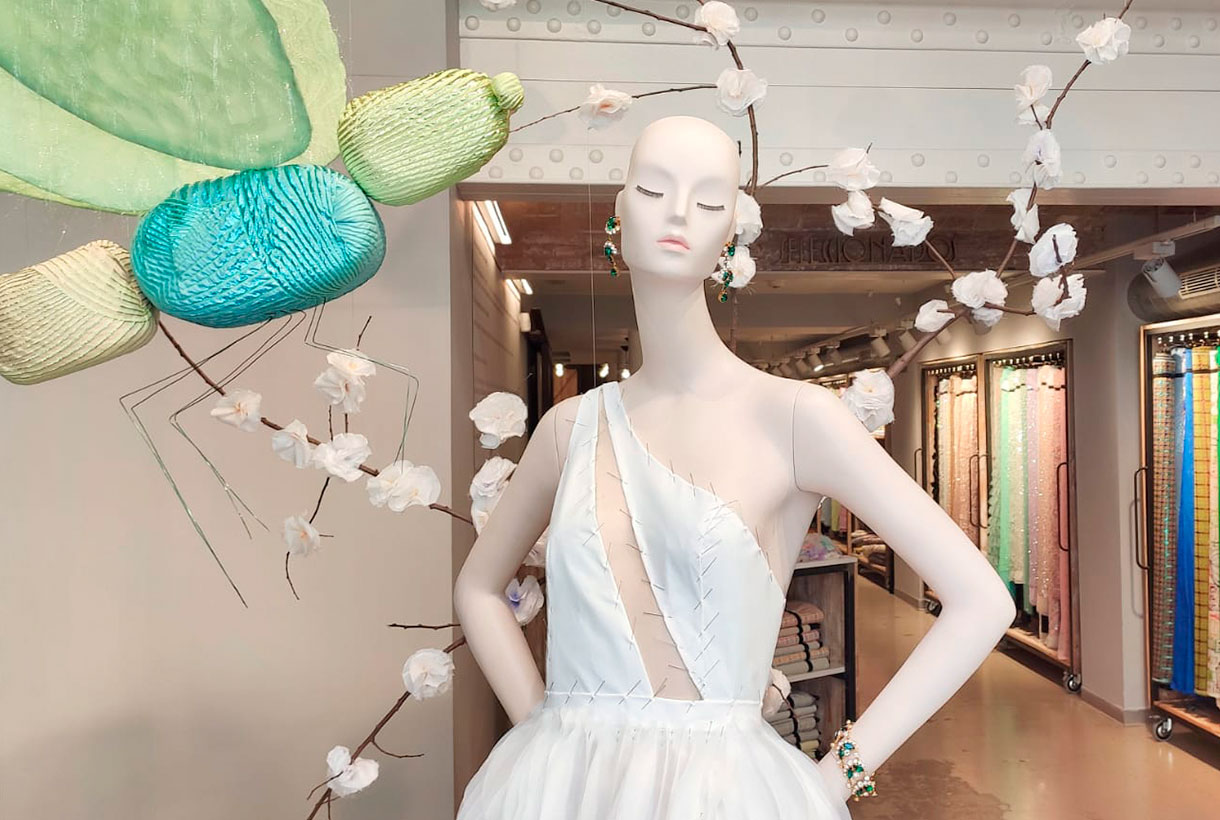
The showcase is a visual presentation of who we are, what we do and how we do it.ﺡ An aesthetic entrance that attracts the visitor, but also justifies our work: the creation of quality fabrics that allow you to dream.ﺡ During this uncertain year we have tried to surprise you with artistic windows that play with concepts that represent us such as luxury, elegance, fantasy, escape or everyday life through our mannequins that have been dressed in the most spectacular fabrics of the season along with other elements that we hope have surprised you.ﺡ Aﺡ weddingﺡ moulage, a chic picnic or a female interpretation of the Magi.ﺡ These are some of the scenes that you have been able to observe through the window of our Gratacﺣﺏs space.
Now, before welcoming the new year, we take advantage of this post to say goodbye to 2021 with the certainty that it has been a year of transition that has allowed us to remain stable thanks to the cohesion between teams and your support and trust in this brand of family fabrics.ﺡ We have new perspectives for 2022 and we want to move forward with new articles that will stand out for their quality, creativity and ability to surprise.ﺡ Get excited, in short.ﺡ Happy New Year!
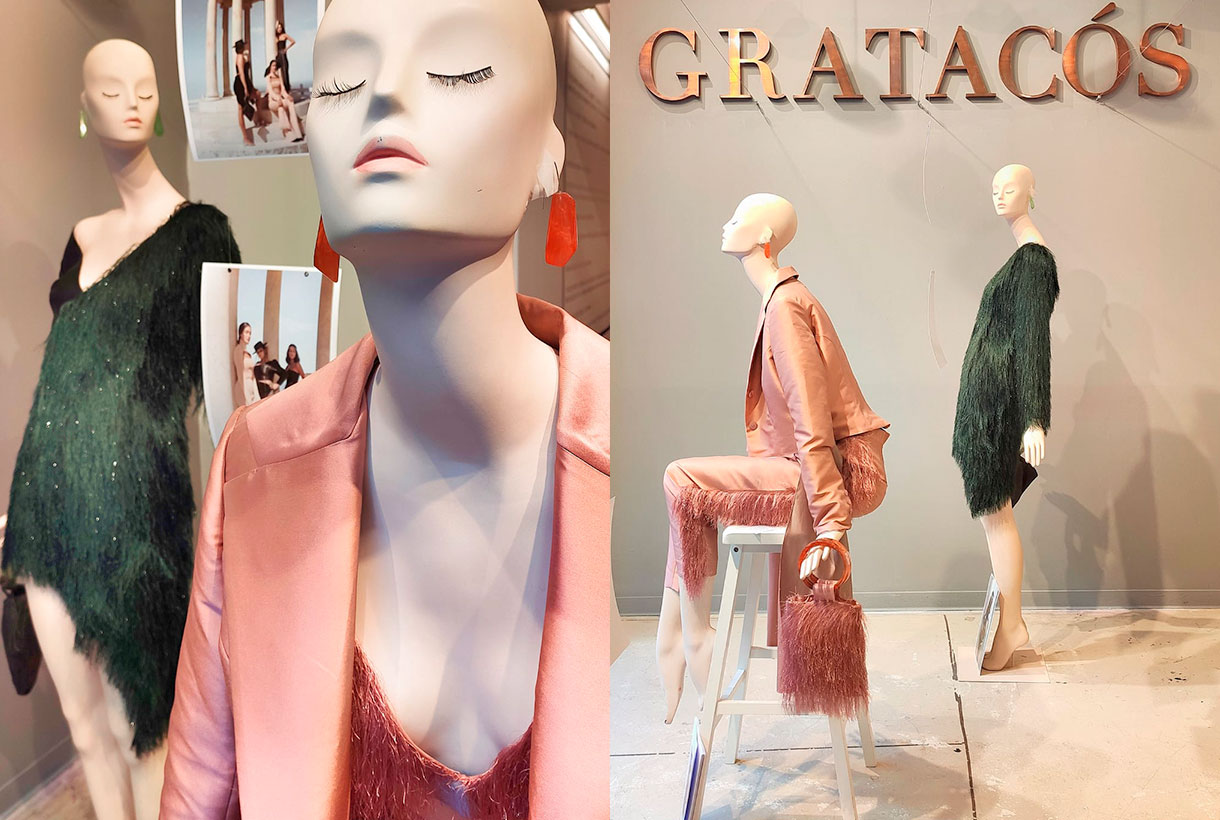
March 2021. New direction
One year after the start of the pandemic, we awake dreaming of planning the upcoming holidays with a relaxation of restrictions.ﺡ Easter, the May bank holidays and the not so distant summer disconnection.ﺡ The beginning of spring also marked a minimalist-inspired showcase featuring two mannequins dressed for the occasion to pay tribute to those bridal celebrations that were returning to the fore.ﺡ Tailoring, feather details and two antagonistic tones that capture the incipient change of season: forest green and dusty pink.
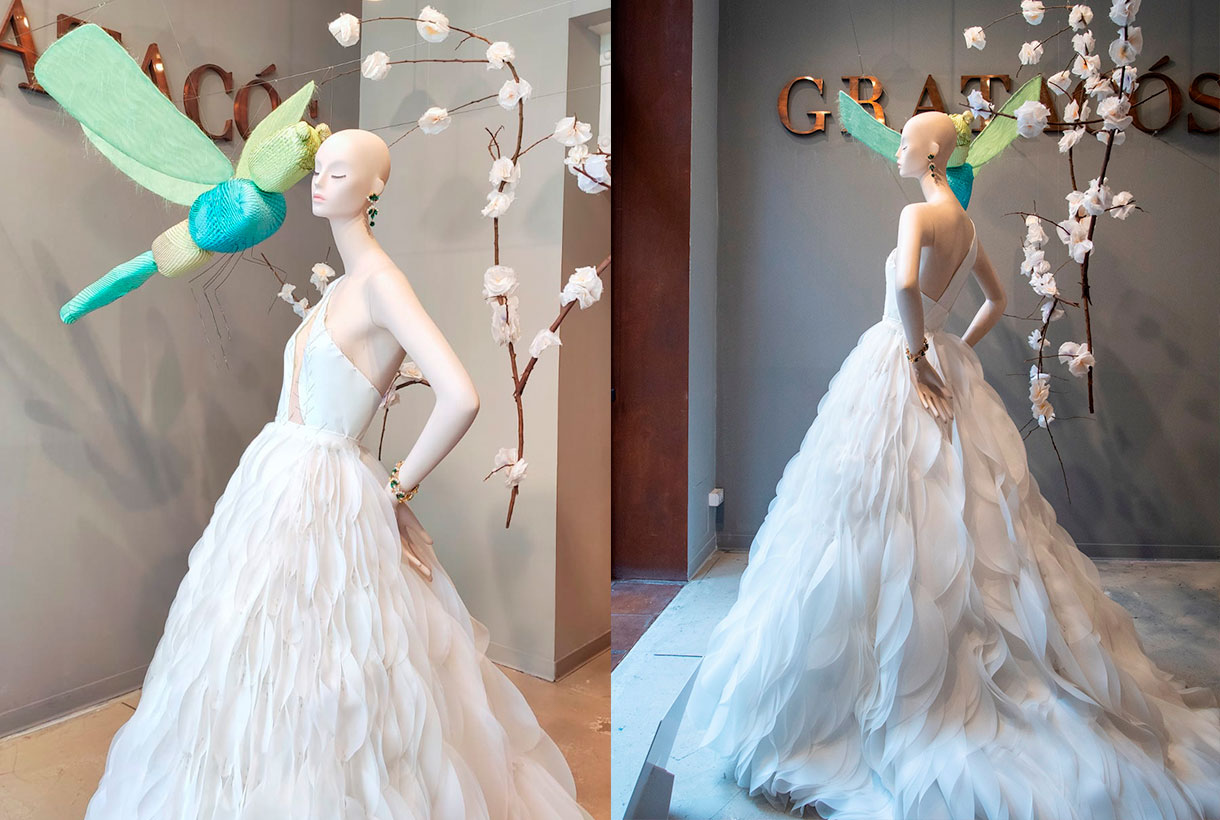
April 2021. Wedding bells
As tradition dictates, April is the bridal month par excellence and from Gratacﺣﺏs we always reserve this shop display to show off the work of one of the winners of the IED Barcelona. wedding dress design postgraduate moulage contest.ﺡ This is an opportunity we offer to showcase the work of new talents in bridal design.ﺡ This year, Eva Escudero created this impressive wedding dress with an asymmetrical design and a large flowing skirt, following in the footsteps of this unique tailoring technique.
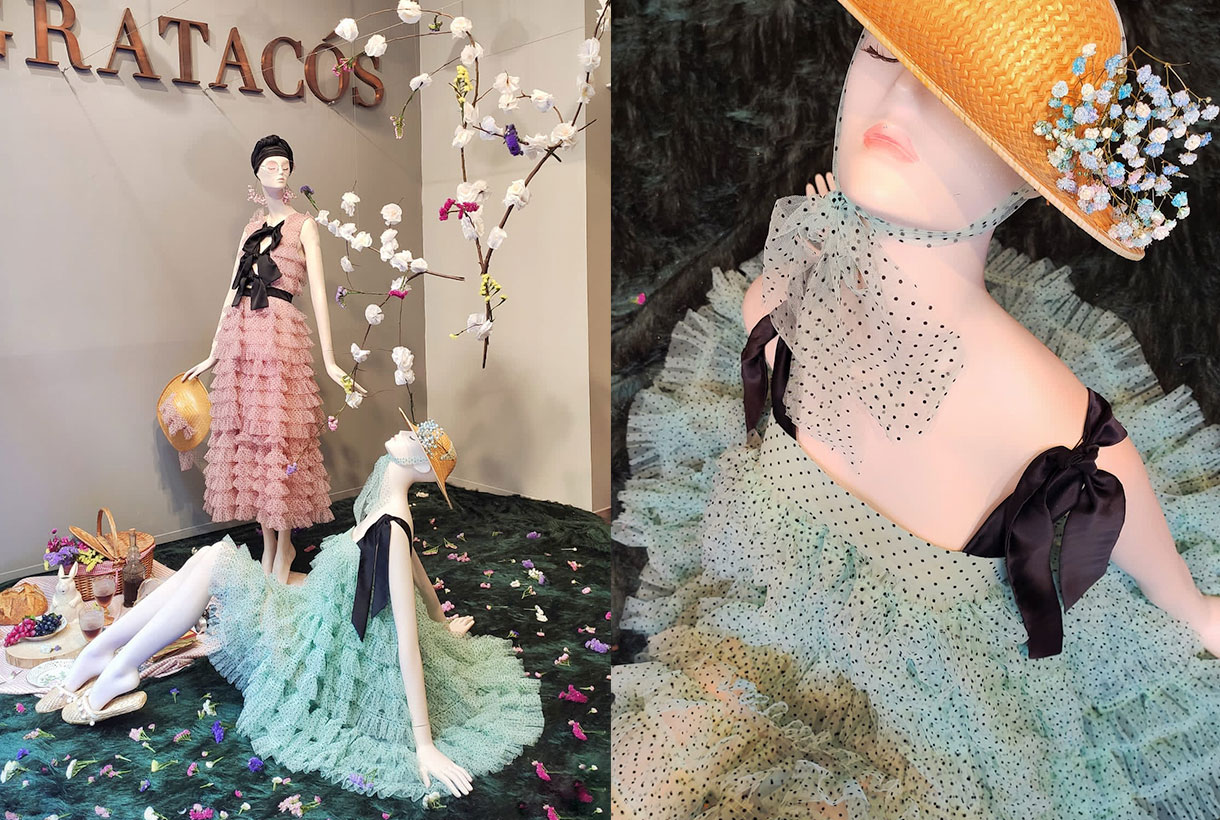
May 2021. Country spirit
In the month of flowers, theﺡ Joplin Atelierﺡ companyﺡ of the sisters Laura and Aida Molano turned our entrance space into an urban picnic with a Provencal air.ﺡ The tulle dresses with small polka dots made with our fabrics, the details in bows and the pastel tones starred in a chic showcase with a multitude of details to carry out this picnic in the open air.ﺡ An artistic representation that portrays the spirit of escape that connects us with nature.
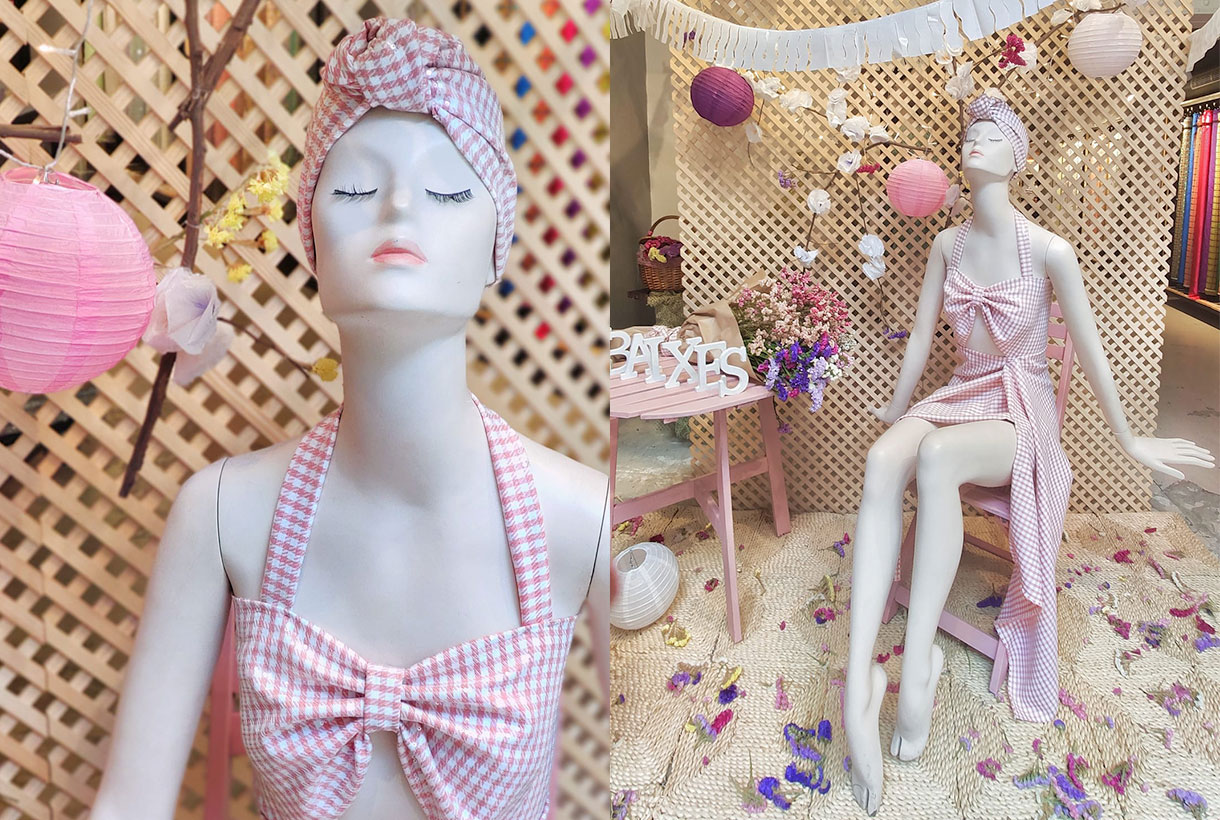
July 2021. Time to escape
The summer month par excellence is a tribute to festivals, fun and feeling carefree, maintaining that hedonistic attitude to take life a little more lightly, enjoying all the earthly pleasures.ﺡ July has a fresh, youthful and daring character, as evidenced by the outfit of our mannequin in pink gingham fabric.ﺡ Let the party begin!
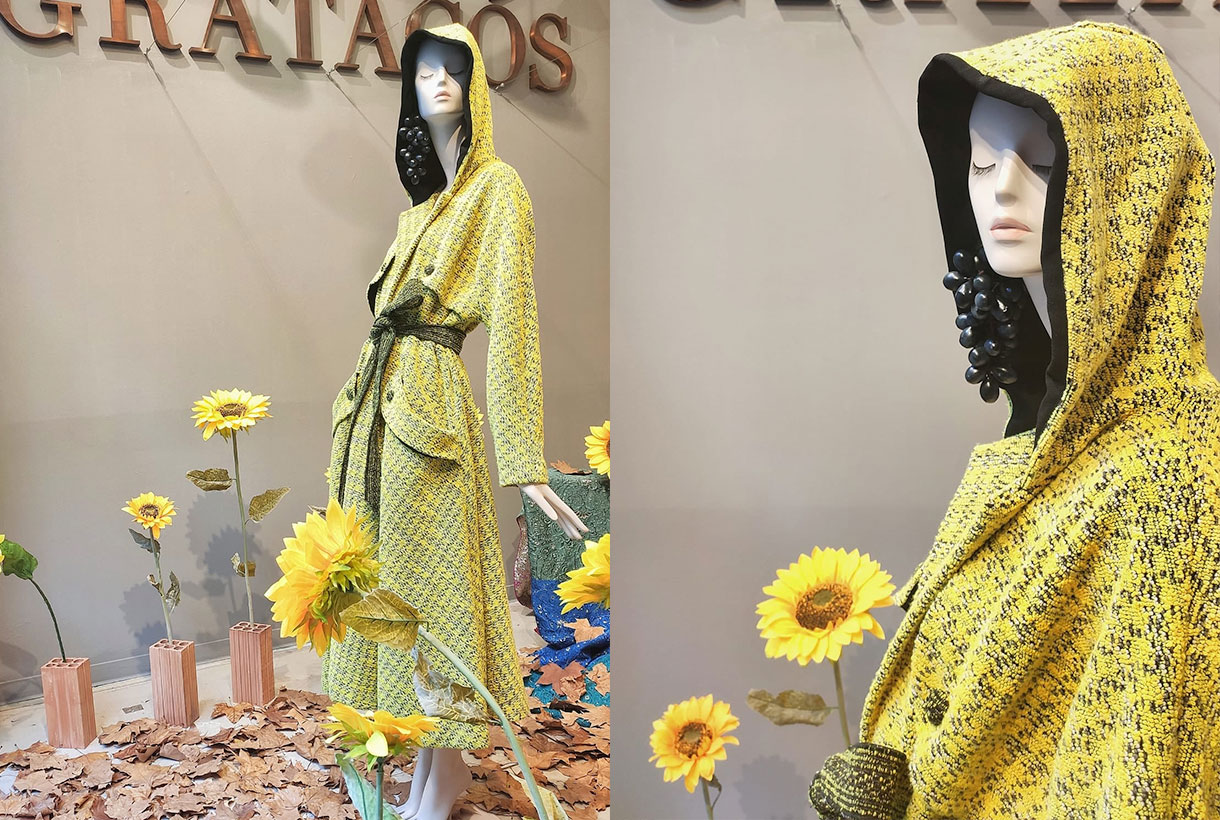
September 2021. Start over
September is the official month of beginnings.ﺡ The new season, the change of season, the return to routines … we illustrate the busiest month on the calender by paying tribute to comfort through a bathrobe-type trench coat made of pistachio green tweed, all very daring dyed yarn, with a wool touch and thick weight.ﺡ A carpet of dry leaves marks the beginning of autumn, which in Barcelona is light and soft.
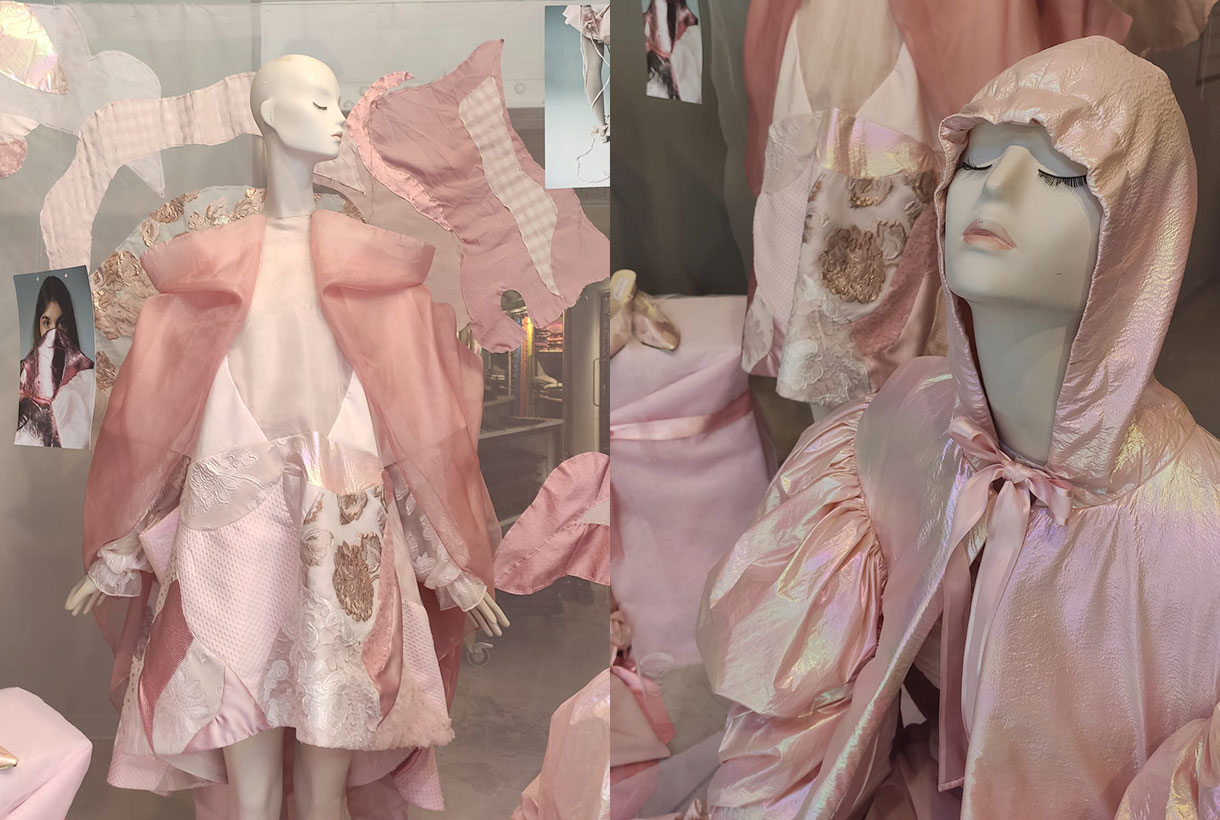
October 2021. The Pink month.ﺡ
It is called the pink month because it is recognized worldwide with this feminine color to raise awareness in men and women about breast cancer and promote self-examination and check-ups to be able to detect it early.ﺡ Our tribute to the most delicate, subtle and romantic month was made by Rosa Cano, a student at ESDI, Escuela Superior de Diseﺣﺎoﺡ with these contrasting fabric models that play with the entire range of pastels and nudes.ﺡ One of the most spectacular showcases of the year!
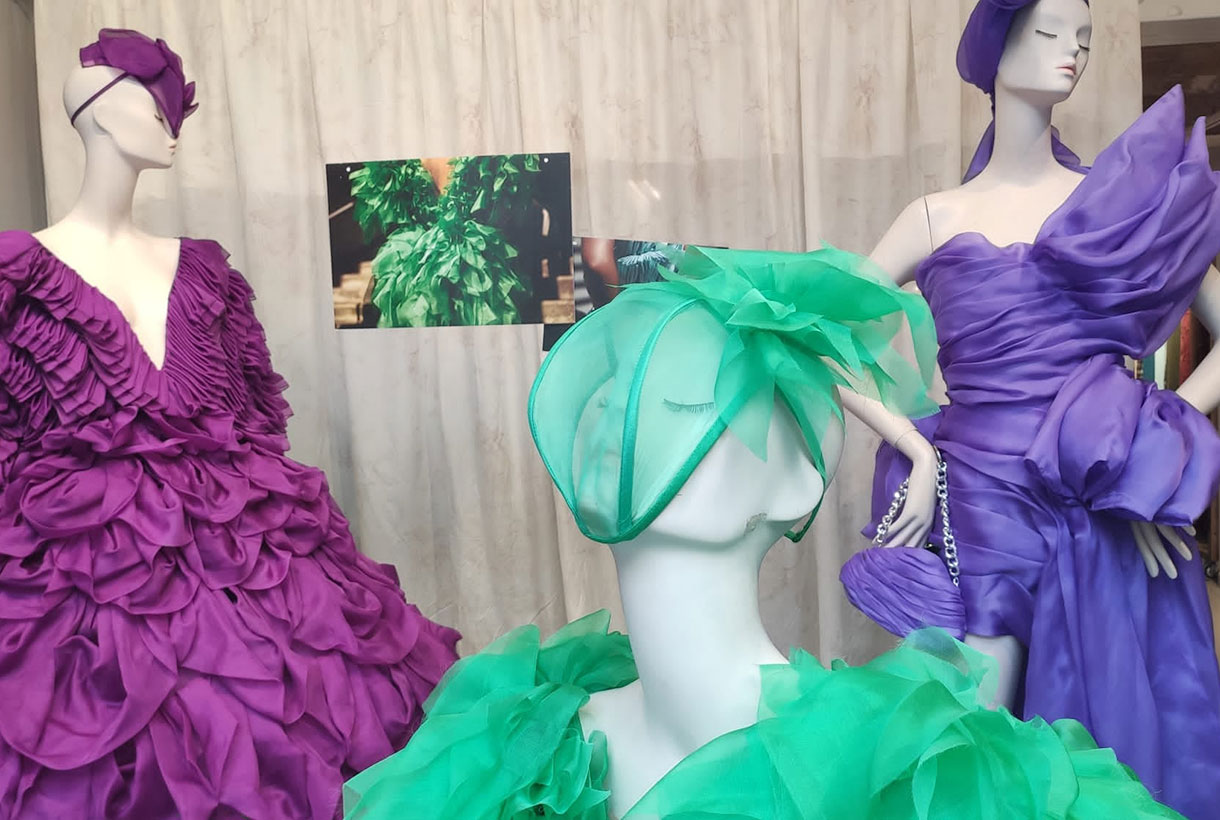
November 2021. Let the party commence!
The proximity of the Christmas holidays makes November a month of preparations.ﺡ A headstart on shopping, lights that turn on and the search for the most surprising outfits to fill the holidays with magic.ﺡ The designer Claudia from the Institut Catalﺣ de la Moda (ICM)ﺡ presents three models from the ‘Ritmos’ collection.ﺡ Voluminous dresses with meters and meters of suggestive organza for celebrations full of fantasy.ﺡ
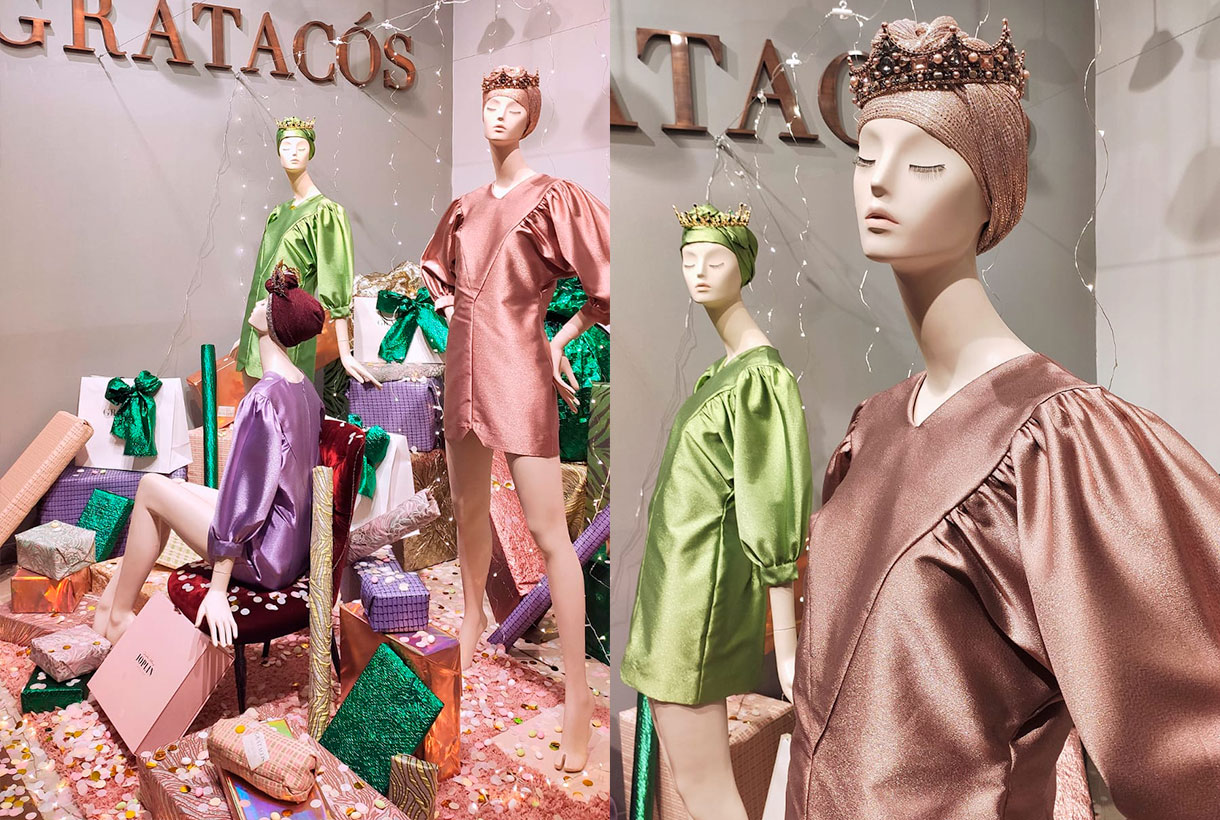
December 2021. The three queens
We ended the year again in collaboration with Joplin Atelier and its proposal in a feminine key.ﺡ Our “Three Magical Queens” are a tribute to the strength of women, capable of dealing with all areas of their lives with determination and mastery.ﺡ They are the philosopher’s stone of many families and especially during the hustle and bustle of the Christmas holidays.ﺡ The mannequins share a turban and crown to match their short dresses with a closed neck and puffed sleeves made from acetate satin with lamﺣ۸.ﺡ Under their feet they protect all the gifts, the symbol of the act of sharing (and receiving).
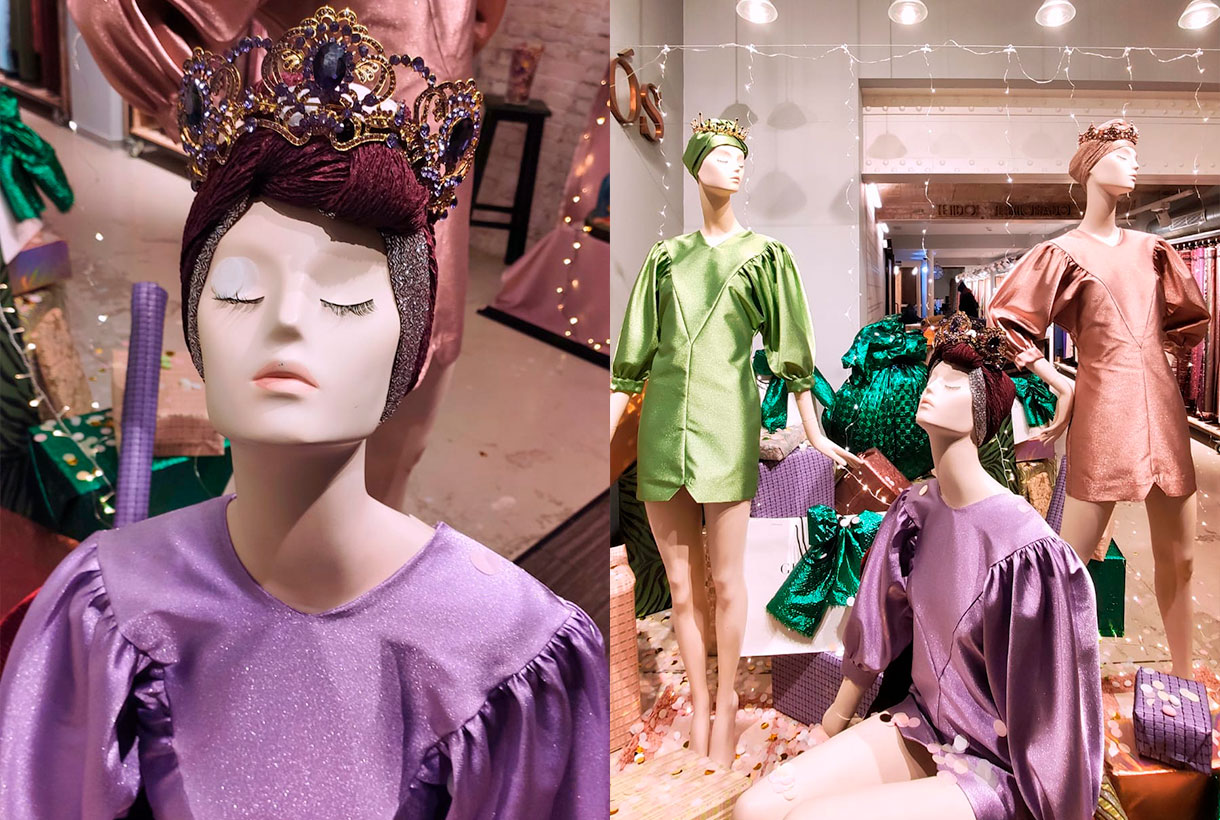
Viernes 10 diciembre 2021
 December is the month of rituals and traditions marked especially by Christmas and the closeness to our loved ones.ﺡ For designers, there is one thing that is awaited for with enthusiasm: finally knowing the colour that will mark the following year and that will be announced at this time,ﺡ Pantone.ﺡ The world authority of colour has once again communicated the tonality that will mark the year 2022 in areas as multidisciplinary as design, art, advertising or fashion.ﺡ It’s called Very Peri and it’s a novel shade based on lilac that, they say, “maintains a daring presence and stimulates ingenuity and personal creativity.”ﺡ Do you have a better cover letter?
December is the month of rituals and traditions marked especially by Christmas and the closeness to our loved ones.ﺡ For designers, there is one thing that is awaited for with enthusiasm: finally knowing the colour that will mark the following year and that will be announced at this time,ﺡ Pantone.ﺡ The world authority of colour has once again communicated the tonality that will mark the year 2022 in areas as multidisciplinary as design, art, advertising or fashion.ﺡ It’s called Very Peri and it’s a novel shade based on lilac that, they say, “maintains a daring presence and stimulates ingenuity and personal creativity.”ﺡ Do you have a better cover letter?
As you already know, the annual choice of a colour is not done randomly or is the result of whim because it involves a deep study and analysis of trends by theﺡ trendhuntersﺡ of the Pantone Colour Institute.ﺡ With an in-depth study of the impact that various exhibitions, works of art, films that will be released next year, the most popular destinations, new technologies and all together, the global mood, they have a meticulous discussion and dimension the impression that every aspect will have.ﺡ Before closing the year, experts have revealed what 2022 holds for us.
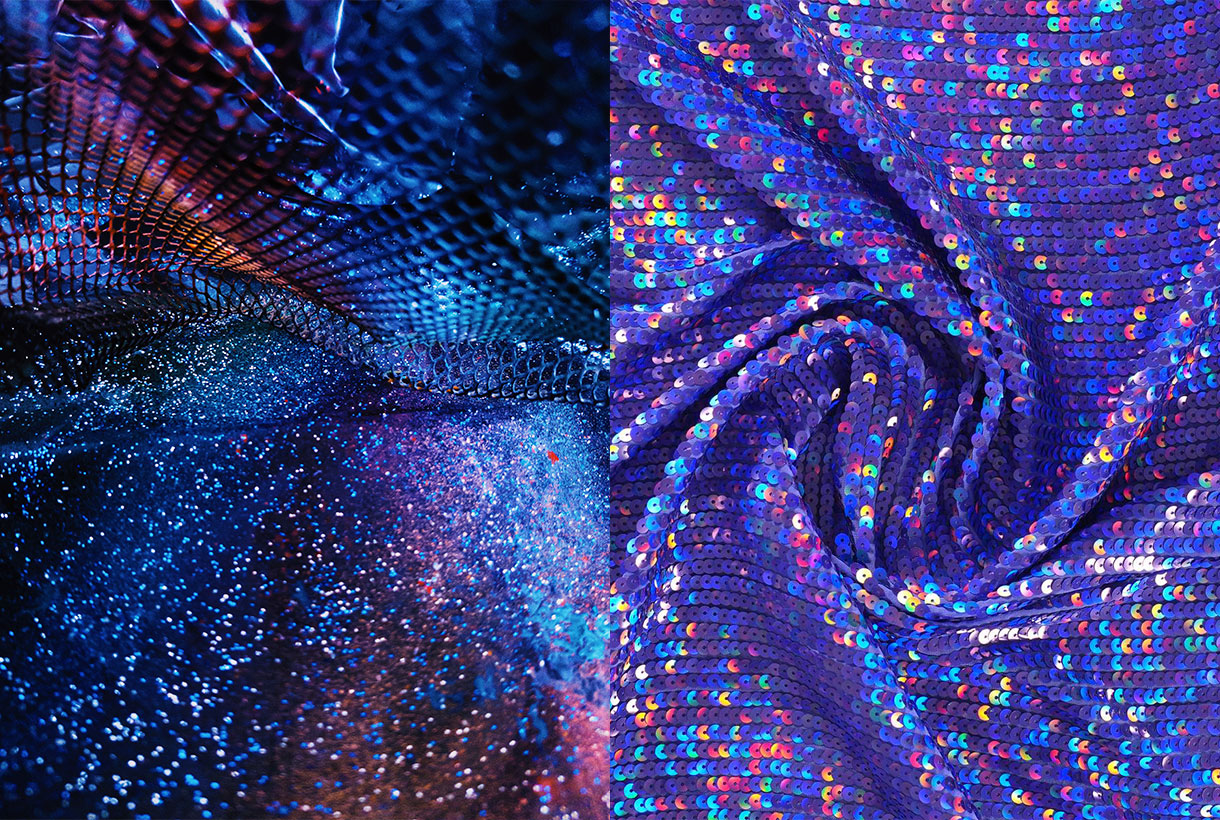
ﻗCreating a new colour for the first time in the history of our colour program is a reflection of a process of innovation and transformation at a global level,” said Laurie Pressman, vice president of the Pantone Institute of Colour.
“The Pantone Colour of the Year is a reflection of what is happening in our world culture and expresses the answer to what people are looking for in this colour,” says Laurie Pressman, vice president of the Pantone Colour Institute. ”ﺡ He adds: “The creation of a new colour for the first time in the history of our educational colour program Pantone Colour of the Year is a reflection of a process of innovation and transformation on a global level. As society recognizes colours as a fundamental form of communication and as a way of expressing, capturing, connecting and influencing ideas and emotions, this new and complex blue hue fused with purplish red highlights the range of possibilities that are presented to us. “
In this case, by encompassing the qualities of blues and, at the same time, having a purplish-red hue,ﺡ PANTONEﺡ 17-3938 Very Periﺡ displays a cheerful and lively attitude, as well as a dynamic presence that stimulates the courage to create and an imaginative expression.ﺡ
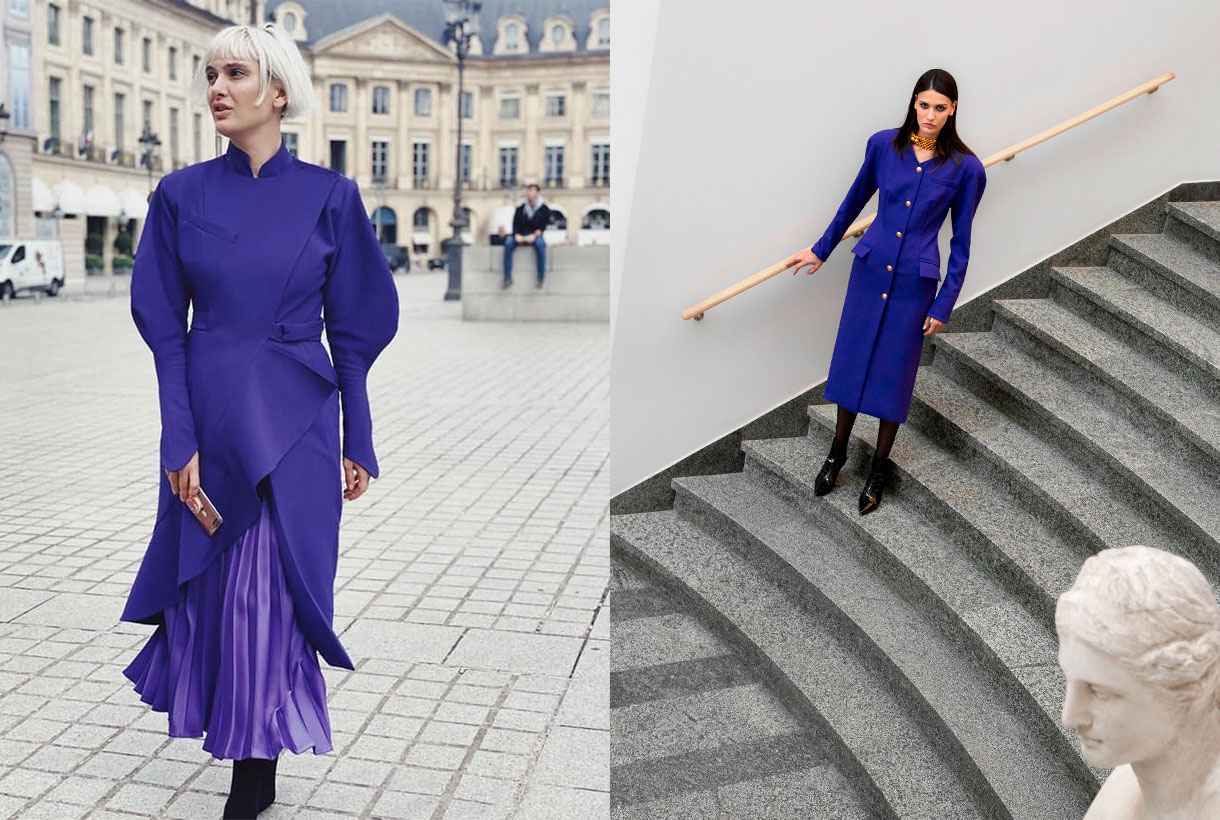
Deciphering the enigmatic tonality of 2022
Very Peri represents the perfect fusion between blue and red.ﺡ A bridge between two primary tones that are interrelated giving way to this enigmatic tone.ﺡ According to Pantone, Very Peri is the result of carefree confidence and daring curiosity that encourages our creative, inquisitive and inclusive spirit.ﺡ The authority of colour considers that this tonality helps to embrace this altered landscape of possibilities and opens a new vision so that each one can rewrite their own life.ﺡ Rekindling gratitude for some of the qualities blue represents complemented by a new perspective that resonates today, PANTONE 17-3938 Very Peri puts the future ahead in a new light.
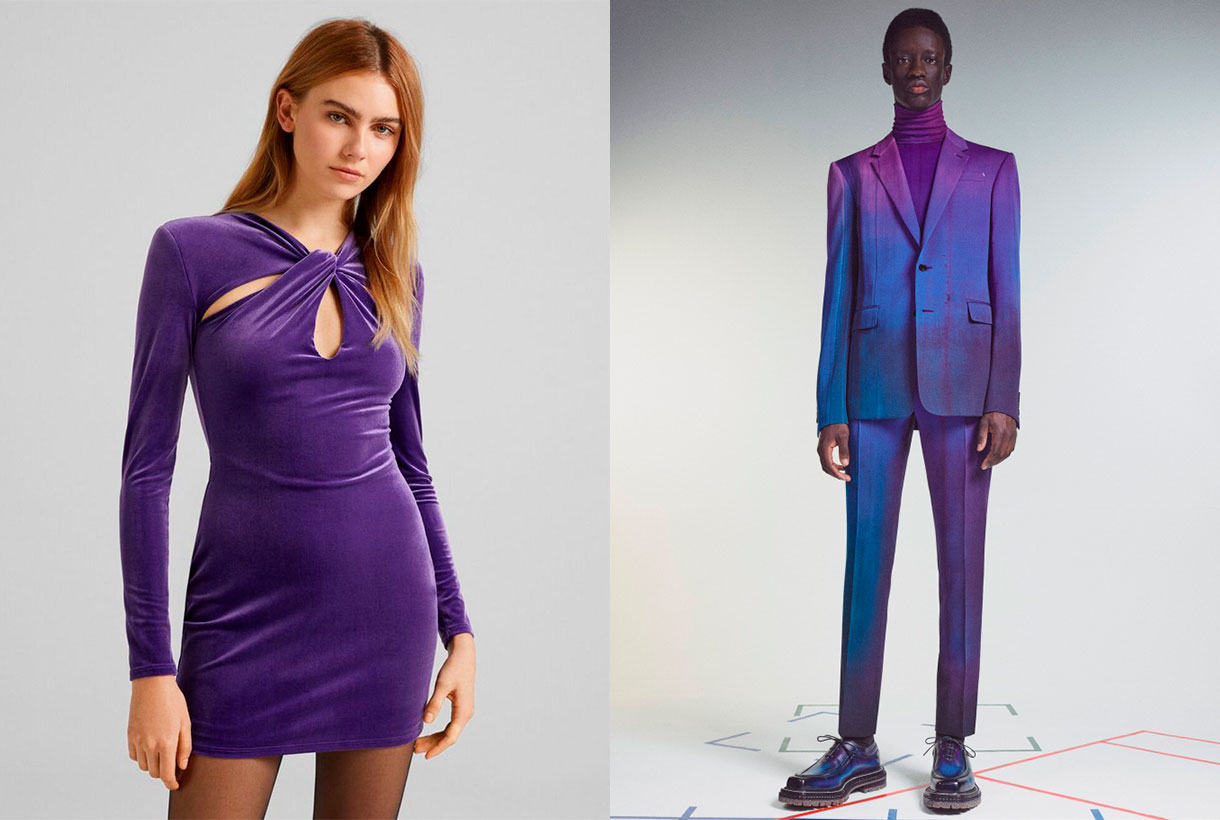
Very Peri displays a cheerful and lively demeanor, as well as a dynamic presence that stir up courage to create and an imaginative expression.
In times of transformation, Very Peri is a symbol of the spirit of our current global age and the transition we are experiencing today.ﺡ As the period of isolation, marked by the global pandemic, is emerging, notions and standards are changing and people’s physical and digital lives have merged in new ways creating hybrids.ﺡ This tonality also symbolizes the rise of digital design, which helps to stretch the limits of reality, opening the door to a dynamic virtual world where you can explore and create new colour possibilities.ﺡ With trends in gaming, the growing popularity of the metaverse, and the growing arts community in the digital space, PANTONE 17-3938 Very Peri illustrates the fusion of modern life in correspondence with colour trends in the digital world and how together they are manifest in the physical world and vice versa.
This colour illustrates the fusion of modern life in correspondence with colour trends in the digital world and how together they manifest in the physical world and vice versa.
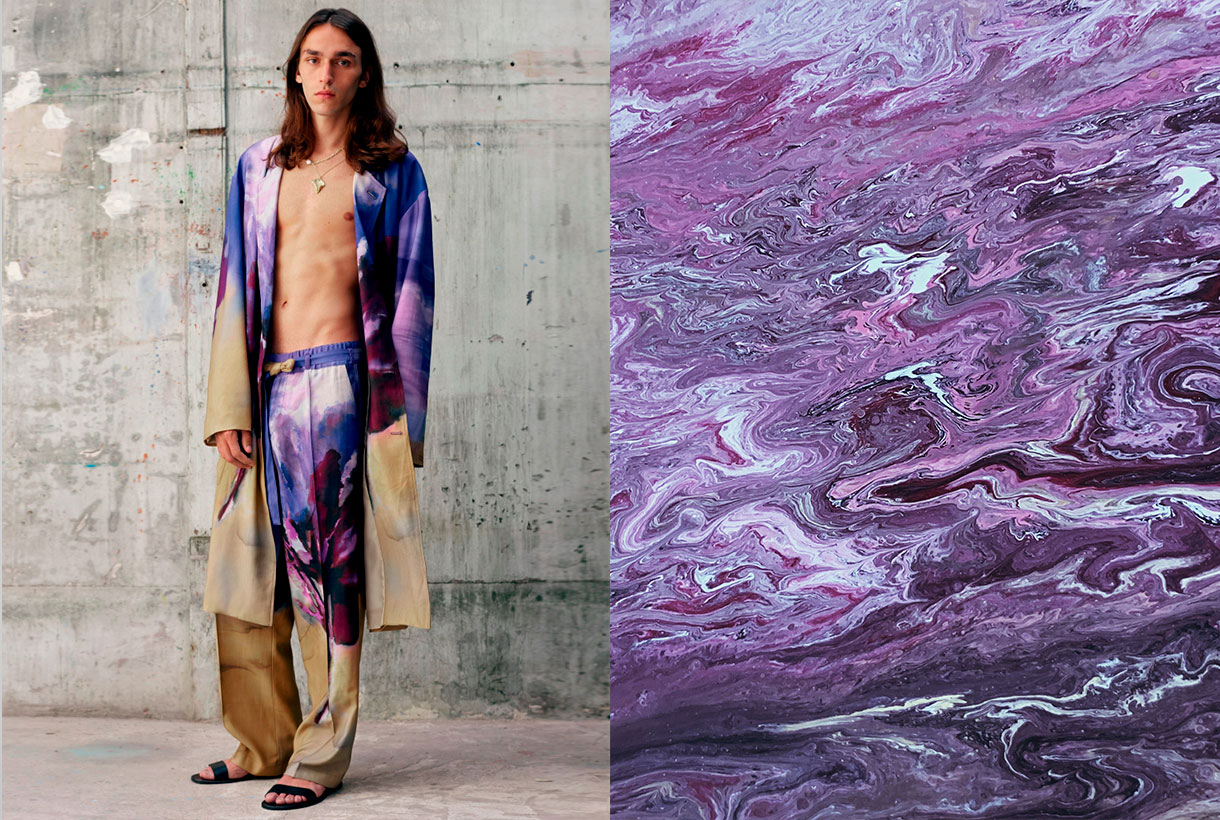 How do we apply Very Peri in the world of fashion?
How do we apply Very Peri in the world of fashion?
We said it at the beginning.ﺡ Very Peri is the colour that seeks to convey courage, boost reinvention and stimulate creativity by displaying carefree confidence and infinite curiosity.ﺡ It is a fresh, versatile andﺡ genderlessﺡ shadeﺡ that adapts to a wide variety of fabrics, textures and reliefs, provides a touch of colour and does not go unnoticed at all.ﺡ On the catwalks, this hue has starred in monochrome looks in the shows of the new summer collections by Isabel Marant, Balenciaga, Thom Browne or Ermanno Scervino.ﺡ Other firms such as Lanvin or Marine Serre have chosen to combine this violet tone withﺡ artyﺡ printsﺡ and neutral tones.ﺡ
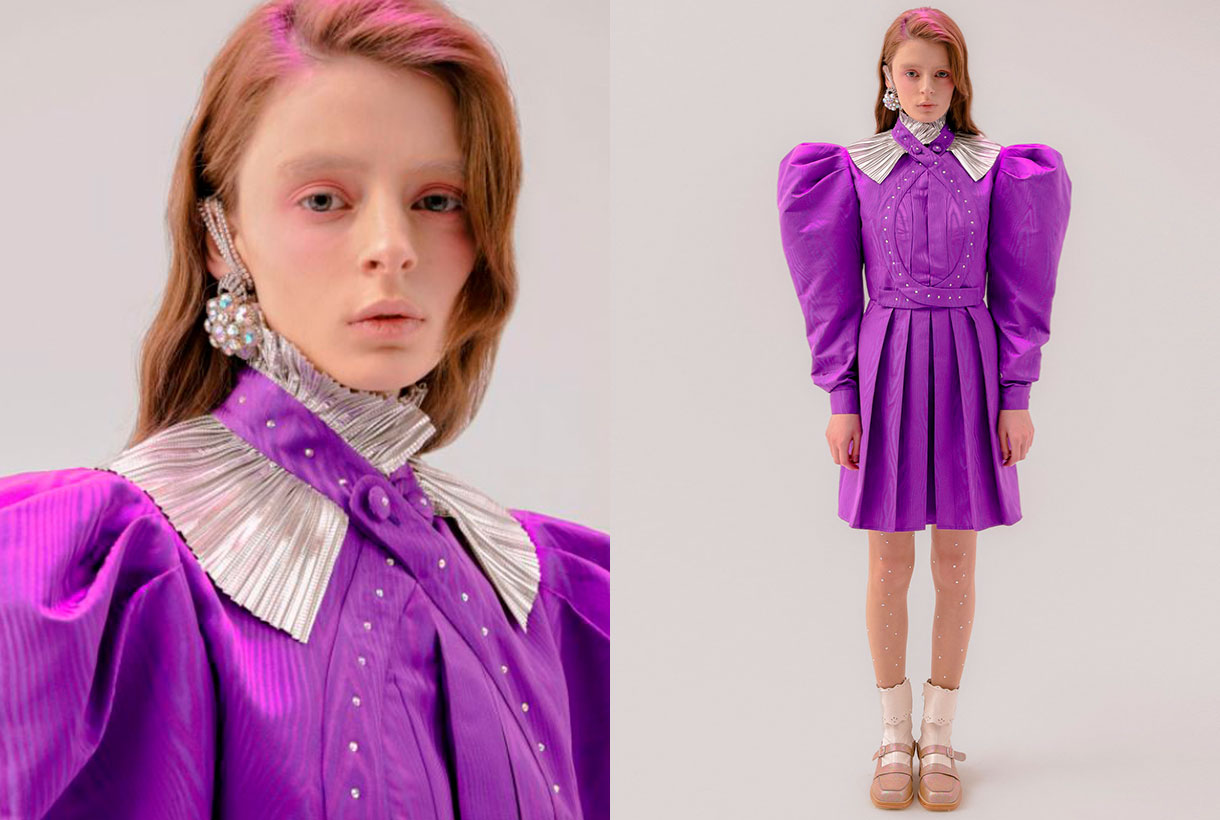
In Gratacﺣﺏs we have several seasonal fabrics where the Very Peri colour is present.ﺡ You will find it in plain items and through prints or in its more sophisticated version with reliefs, iridescence and rhinestones.ﺡ Take the opportunity to rediscover the collection that we have on offer in our online store.
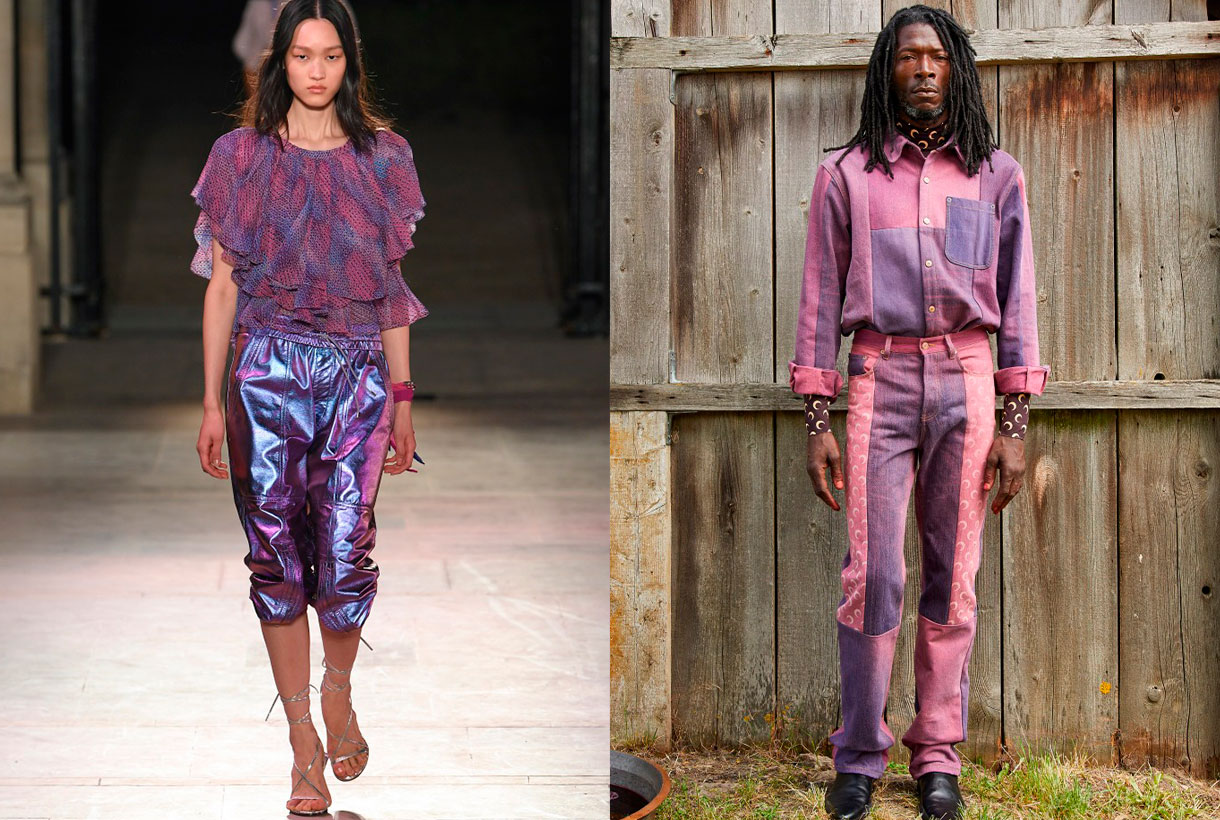


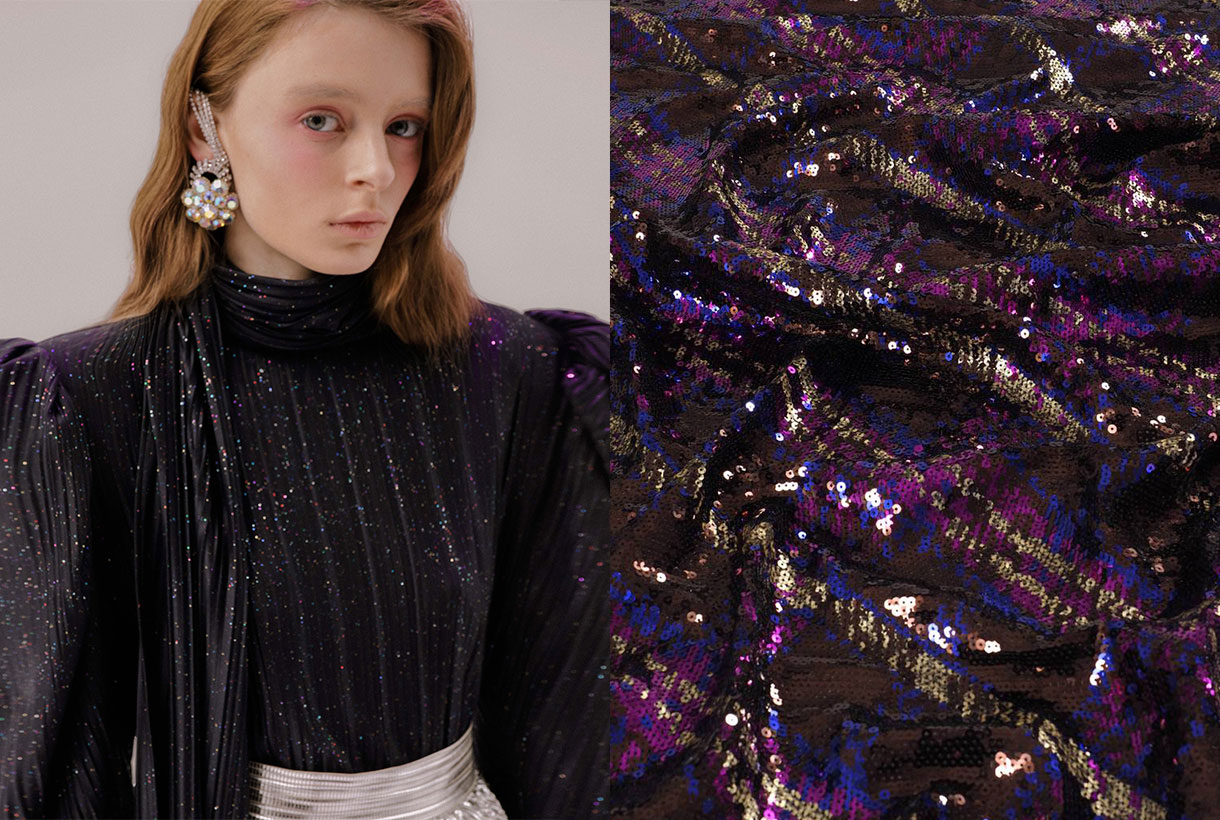
Miﻠrcoles 03 noviembre 2021
 From Gratacﺣﺏs we closely follow the Spanish catwalks because we like to appreciate the creativity of designers in the form of impressive seasonal garments and how, sometimes, one of our fabrics sneaks into the looks of their magnificent collections.ﺡ After the Mercedes-Benz Fashion Week Madrid in September, the last appointment with fashion was held byﺡ 080 Barcelona Fashionﺡ last month, in a new exhibition of fashion and power.
From Gratacﺣﺏs we closely follow the Spanish catwalks because we like to appreciate the creativity of designers in the form of impressive seasonal garments and how, sometimes, one of our fabrics sneaks into the looks of their magnificent collections.ﺡ After the Mercedes-Benz Fashion Week Madrid in September, the last appointment with fashion was held byﺡ 080 Barcelona Fashionﺡ last month, in a new exhibition of fashion and power.

The Catalan catwalk once again opted for the digital format, presenting for the third time in a row, fashion short films previously recorded and edited by 22 designers who participated in the last edition.ﺡ This time, the film set of the audiovisual pieces took place in a space that broke with the modernist legacy of recent editions: Xavier Corberﺣﺏ’s residential and architectural complex located in Esplugues de Llobregat.ﺡ A wonderful sculptural work of concrete and glass of a rationalist character with dreamlike buildings that recall the metaphysical painting ofﺡ Giorgio de Chirico or the mathematical art of Escher.
Next, we explain in detail some of the collections that surprised us the most with designers who maintain creative discourses linked to uniqueness, craftsmanship, sustainability or proximity.

Avellaneda
Avellaneda turned the XC space of the Xavier Corberﺣﺏ architectural complex into a glamorous party displaying beauty, youth and good taste in clothing.ﺡ In the new collection, the Barcelona designer Juan Avellaneda was inspired by the city and the individuals who inhabit it and share secrets, passions, ephemeral romances, eternal promises and moments of fun.ﺡ This urban jungle consisted of a sophisticated collection of cocktail looks with traces of safari style: a revisionﺡ of the zebraﺡ animalﺡ printﺡ , sequined jackets andﺡ baggyﺡ pantsﺡ in earth tones.ﺡ These innovative pieces coexisted with their signature flagships: tuxedos, dresses with sensual openings, silks, ruffles and sequins reign in clothes with daring patterns in a unique proposal that mixes exoticism with its usual elegance.ﺡ The neutral bases, the pairing of black and white, red and fuchsia gave colour to this festive collection that plays with the classic codes of good dress.

Eiko Ai
Eiko Ai brings a new value in women’s fashion by combining concepts such as sophistication and sensuality in the clothes that she creates in a casual style for everything to wear.ﺡ Always with that point of magic that invites clients to dream through the designs.ﺡ On this occasion, the firm led by Glﺣﺎ Lladﺣﺏ has presented in 080, a collection that represents a fantastic trip to the mountains that allows us to discover the nymphs of the forest.ﺡ These creatures of evocative power, inspiring myth and legend, have been dressed in two-piece combinations with bras – a hallmark of Eiko Ai-, oversized bomber jackets, trench coats with sparkly fabrics and sheer dresses with surprising cuts that insinuate without showing excessively.ﺡ All this adorned with sequins, velvets, satins, lace and iridescent materials that create sensual transparencies on the models’ bodies.ﺡ The silhouettes have a minimalist point inspired by the 90s and the lingerie looks blend with the festive in this exciting proposal tinged with deep green, silver and lavender that attracts at first glance.

Moisﺣ۸s Nieto
The designer from ﺣbeda (Jaﺣ۸n) made his debut on the Catalan catwalk displaying his credentials: contemporary design combined with the passion for craftsmanship and the trade that characterizes his elegant style from restraint.ﺡ In the new collection for next season, Moisﺣ۸s Nieto takes a trip back in time to reconnect with his childhood in Andalusia.ﺡ From the summers of the 90s, the designer chooses elements rescued from memory that serve to shape a proposal that speaks of everyday life: the crochet of the doilies, the nets of the curtains, the lace or the plants of the patio are a representation of the memories that take us to the eternal hot summers of the south.ﺡ The sustainable brand shapes its particular vision in roomy midi dresses and pleated silk skirts.ﺡ Light garments made with organic cotton or silk fabrics and mixed with artisan techniques such as knitting, crochet and macramﺣ۸.ﺡ It is worth noting the textures displayed that play with different weights and structures to create volume in women’s garments that add unexpected details.ﺡ As in previous collections, the designer approaches craftsmanship and values ﻗﻗsustainability, two aspects that have become the most visible hallmarks of the Spanish firm.

Y_Como
Finally, highlight the new work of Cristina and Yolanda Pﺣ۸rez from Yolancris in the new brand, Y_Como,ﺡ which once again surprises with a new collection based on research and the creative process.ﺡ The summer proposal presented at 080 Barcelona Fashion is inspired by the painting ‘The Garden of Delights’ by Bosco.ﺡ Specifically in the panel that refers to Paradiso with a free interpretation, but full of visual references that refer to the work focused on creation.ﺡ In the first scene of theﺡ fashion filmﺡ , set in the architectural garden of Xavier Corberﺣﺏ, the models that embody the characters in the painting appear: there is the owl that represents the evil that contemplates falling into temptation, the figures of Adam and Eve , and followed by exotic animals that are represented by models of baroque aesthetics that show spectacular golden robes with floral embroidery.ﺡ Also featured are other black sexy dresses, garments with lots of floral and patchwork denim, fabric star creative signatureﺡ ready-to-wearﺡ bulky clothes that give a rebellious streak this sensuous YComo proposal.





Sorry, this entry is only available in Espaﺣﺎol.
Martes 21 septiembre 2021
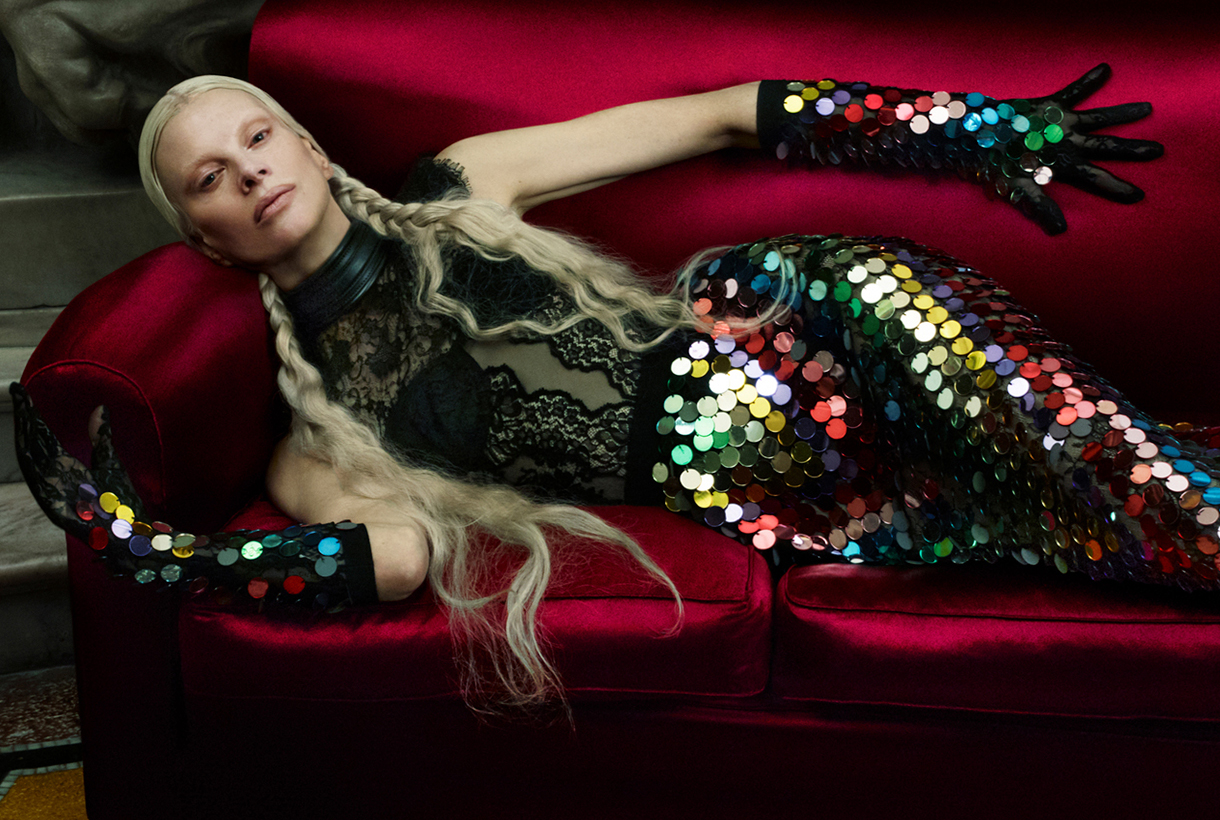 Little by little, it seems that we return to a certain normality.ﺡ And an indicator of this is our physical participation inﺡ Premiﺣ۷reﺡ Visionﺡ Paris. This fair that takes place twice a year is one of the most specializedﺡ and influential in the world for manufacturers of fabrics.ﺡ Exhibitors present all the new collections coming one year ahead.ﺡ This year,ﺡ Gratacﺣﺏsﺡ is present again toﺡ kick offﺡ one of our most special proposals: Autumn-ﺡ Winterﺡ 2022/2023.ﺡ We say that it is “special” because the pandemic is representingﺡ a year ofﺡ great challenges forﺡ the companyﺡ to maintain creativity, production andﺡ salesﺡ , without overlooking innovationﺡ and sustainabilityﺡ that characterizes ourﺡ business.
Little by little, it seems that we return to a certain normality.ﺡ And an indicator of this is our physical participation inﺡ Premiﺣ۷reﺡ Visionﺡ Paris. This fair that takes place twice a year is one of the most specializedﺡ and influential in the world for manufacturers of fabrics.ﺡ Exhibitors present all the new collections coming one year ahead.ﺡ This year,ﺡ Gratacﺣﺏsﺡ is present again toﺡ kick offﺡ one of our most special proposals: Autumn-ﺡ Winterﺡ 2022/2023.ﺡ We say that it is “special” because the pandemic is representingﺡ a year ofﺡ great challenges forﺡ the companyﺡ to maintain creativity, production andﺡ salesﺡ , without overlooking innovationﺡ and sustainabilityﺡ that characterizes ourﺡ business.

Broadly speaking, the new collection is a solid and choral proposal, which shows our desire to work and continue advancing through the generation of ideas, the creation of creative products and the investigation of new trends.ﺡ A proposal based on the strength of colour, print and designs with great visual presence.ﺡ We play with contrasting tones,ﺡ uniqueﺡ printsﺡ and add an extra touch of fantasyﺡ because we believe that it is more necessary than ever.ﺡ To do this,ﺡ we mix flowers of different shapes and styles with geometric motifsﺡ , handicrafts,ﺡ surprising textures,ﺡ simplified neo Pucci motifs and neo William Morris with spacious backgrounds.ﺡ All this to create aﺡ surprising game of harmonies, colour, light and tone thatﺡ we believe will leave no-one indifferent.

The hug as the backbone
“Weﺡ feel like going out and showing our joy, energy and positivity,” assures Rosa Pujol, creative director ofﺡ Gratacﺣﺏs.ﺡ Under this first premise, the Fall-ﺡ Winterﺡ 22/23ﺡ collection has been structured,ﺡ even more than usual on quality, fantasy and luxury.ﺡ Show to surpriseﺡ others and to surprise ourselves,ﺡ is a maximum requirement now in capital letters.
And in this desire to show the fanciful side of fashion, the mother concept that underpins the entire proposal for next winter intervenes: the hug.ﺡ The symbol of the unionﺡ of affectionﺡ andﺡ ofﺡ brotherhood among people, most evident in unstable timesﺡ like we are experiencing.ﺡ To hug is to embrace with arms, reach out, understand, restrain, and even include.ﺡ The creeper plants also hug the logs and facades of houses.ﺡ And we liked that concept that unites and creates a feeling of sympathy.ﺡ Aesthetic and visual.ﺡ In fact, it is a collection designed to embrace multiple markets and different occasions through versatile and surprising items.
ﻗWeﺡ feel like going out and showing our joy, energy and positivityﻗ.
Rosa Pujol,Gratacﺣﺏs creative director

Embrace materials
The Autumn-ﺡ Winterﺡ 2022/2023ﺡ collectionﺡ embraces craftsmanship.ﺡ The thick yarns, the obvious braiding and the hand-made finishes.ﺡ It is also a season where texture communicates by itself through complex folds,ﺡ 3D effects,ﺡ opaque transparencies that hint without showing,ﺡ and precious embossing that surprise by their lines and shapes.
This season, the creative team also aims to stimulate new sensibilities by bringing together two fabrics that a priori are not compatible with each other to create daring aestheticsﺡ in the sameﺡ outfit.ﺡ It is about daring through complementary items that together create compatible chromatic harmonies.ﺡ Another characteristic of the season is the commitment to the brightness that the night jump gives to establish itself during the day through surprising fabrics that seek a subtle and fantasy point of light that is 100% wearable.ﺡ Simple, but sophisticated.

Embrace colour
Colour, more than matter, is light and isﺡ developedﺡ conscientiouslyﺡ this season to achieve very attractive results.ﺡ A luminosityﺡ that makes us look better on the street.ﺡ The collection works from the primary tones,ﺡ through graphic printsﺡ ,ﺡ to the palette of metallics such as goldﺡ (solar energy)ﺡ and silverﺡ (lunar energy)ﺡ ,ﺡ mixed together.
As usual, inﺡ Premiﺣ۷reﺡ Visionﺡ Paris,ﺡ three colour ranges will be presented.ﺡ The first corresponds to a luminous bandﺡ governed especially byﺡ radiantﺡ yellowsﺡ and warm browns.ﺡ The second card is the middle card with vibrant tones that go from oranges to blues and greens, to finish with fuchsias.ﺡ Finally, the last letter corresponds to the neutrals and the duller tones, considered more masculine.ﺡ A very interesting range that offers a great possibility of combinations as it is versatile and timeless.

Embrace nature
The Autumn-ﺡ Winterﺡ 2022-2023ﺡ collectionﺡ tries to strengthen the ties between man andﺡ closestﺡ natureﺡ through fabrics that refer to the beauty of plants.ﺡ Garden inspiration returns through fabrics with plant motifs and country landscapes.ﺡ As the writer and gardener, Jamaicaﺡ Kincaid would sayﺡ : ﻗGardens are spaces to connect usﻗ.ﺡ Fromﺡ Gratacﺣﺏsﺡ , the natural is also revalued with a commitment to the origin of the products and the raw material.
Finally, flowers also take over the collection in a particularly flowery winter.ﺡ The flower is the protagonist of many of the fabrics with a variety of shapes,ﺡ colors,ﺡ sizes and arrangements.

Embrace geometry
Geometric motifs are very present in this coming season with fabrics that give a twist to the classics to attract the attention of the new generation of consumers: checks,ﺡ polka dots,ﺡ houndstooth or diamonds that are creatively combined to give new unexpected geometries.
In parallel,ﺡ surprising combinations also arrive to generate all kinds of fantasies.ﺡ The most extreme: combining two fabrics with graphic motifs that can be combinedﺡ in the same outfit.ﺡ Finally, although it is not anﺡ animalﺡ printﺡ season,ﺡ in the next winter collectionﺡ aﺡ fanciful itemﺡ appearsﺡ timidly suchﺡ as a giraffe design Jacquard.


Miﻠrcoles 08 septiembre 2021
 Itﺡ was to be expected!ﺡ Within its cyclical nature, fashion evokes fantasy after having spent almost two years stuck in comfort and austerity,ﺡ two valuesﺡ influenced by the global pandemic.ﺡ Remember that fashion is always a reflection of society.ﺡ Thus, the reign of tracksuits, sweatshirts, pyjamas and slippers (whether they are at home or not), seems to be coming to an end with new inspirations that are postulated totally antagonistic: More luxury, more ornamentation and of course, more shineﺡ in festive garments and collections that cry out to escape from reality.
Itﺡ was to be expected!ﺡ Within its cyclical nature, fashion evokes fantasy after having spent almost two years stuck in comfort and austerity,ﺡ two valuesﺡ influenced by the global pandemic.ﺡ Remember that fashion is always a reflection of society.ﺡ Thus, the reign of tracksuits, sweatshirts, pyjamas and slippers (whether they are at home or not), seems to be coming to an end with new inspirations that are postulated totally antagonistic: More luxury, more ornamentation and of course, more shineﺡ in festive garments and collections that cry out to escape from reality.
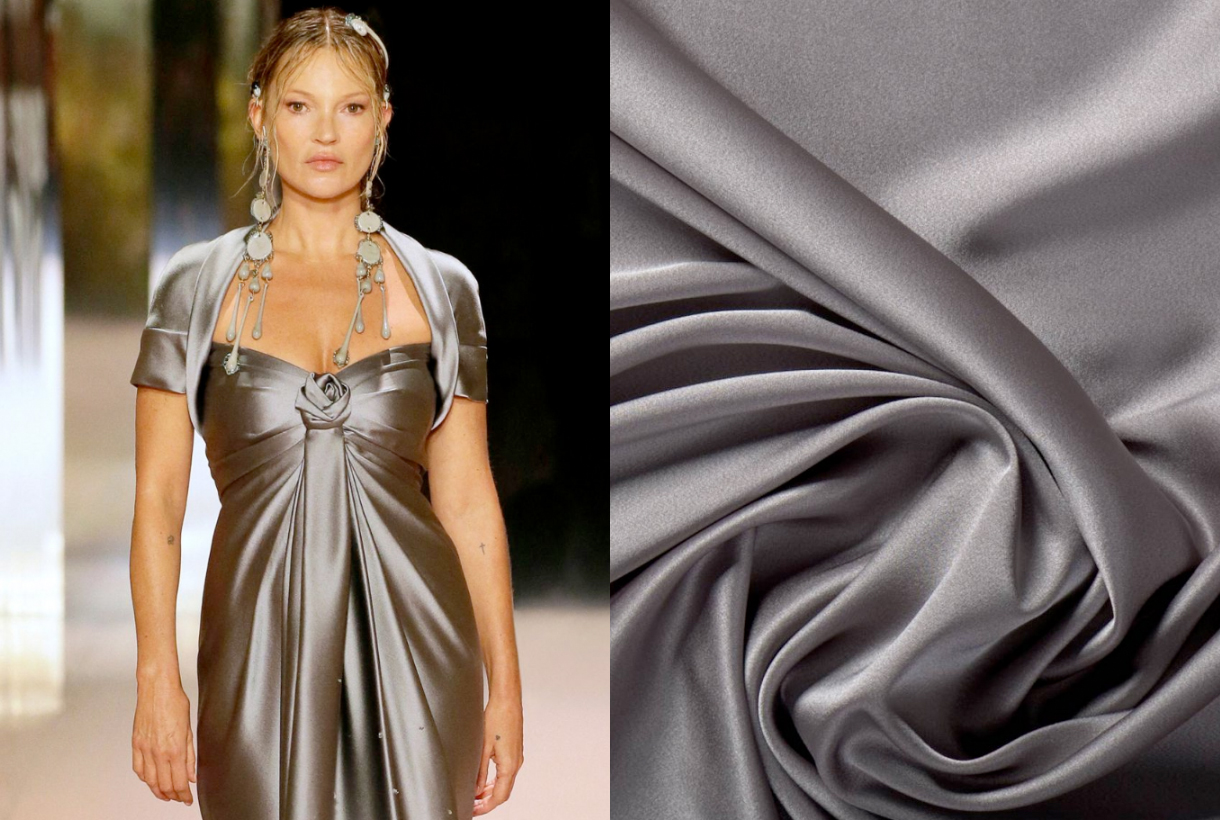
Of the three maxims, we want to focus on shiny fabrics as one of the trends that is going strong this Fall-ﺡ Winterﺡ 21/22ﺡ seasonﺡ that we will premiere in September.ﺡ Beyond the sequins that have had huge success as from now on and arrive in their most ostentatious versionﺡ (ﺡ sequins on sequins in pants, jackets and voluminous dressesﺡ ), we want to talk about satin fabrics, one of the great bets of the new collectionsﺡ that we have seen in garments, shoes and bags and whose subtlety and sumptuousness continues to inspire us when it comes to making our fabrics.

It is curious how satin is one of the few fabrics that knows no limits in the wardrobe: it serves us both for winter and summer,ﺡ or between seasons.ﺡ Beyond its timelessness, its versatility also stands out because it admits infinite possibilities, making it an indispensable fabric in anyone’s wardrobe.ﺡ Satin has a nice drapeﺡ thanks to its fluidityﺡ and soft sheen.ﺡ It is a silky fabric capable of transforming a style and allowing it to navigate between formal and casual.ﺡ On the catwalk, we have seen it inﺡ a variety of garments and accessories for a long time, especially inﺡ slipﺡ dressesﺡ (inspired by lingerie nightgowns), romantic tops and blouses, light and flowing skirts,ﺡ and even handbags.

A brief history of satin
Satin originated in Chinaﺡ more than 2,000 yearsﺡ ago and come from silk.ﺡ In fact, its name derives fromﺡ Zaitun, a Chinese port famous for exporting satin.ﺡ Although it was popular and highly desired in Greco-Roman culture, the consumptionﺡ of silkﺡ satinﺡ spread in Europe in the Middle Ages towards the 12th and 13th centuries.ﺡ Italy wasﺡ the main exporting and consumer port.ﺡ Satin captivated for its richness, fluidityﺡ and splendor, itﺡ wasﺡ cheaper than silk, and wasﺡ one of the fabrics most used in clothingﺡ for the privileged classes.ﺡ It was also usedﺡ in textiles to decorateﺡ grandﺡ castles and palaces.ﺡ Satin was not popularizedﺡ en masse, until the 19th century, after the Industrial Revolution and advances in the production and marketing process.ﺡ This fabric also spread to other areas such as underwear.ﺡ Then, satinﺡ became an affordable and versatile fabric, that could emulate the softness, richness and elegance of silk.

During the 20th century, satin conquered the sexiest and most chic clothing of the old Hollywoodﺡ actresses.ﺡ It was seen through lingerie dresses that were a scandal in their time for theirﺡ daring.ﺡ Some examples:ﺡ the actress and sex symbol,ﺡ Mae Westﺡ wore in 1937 a satin dress adorned with flowers on the shoulder that marked her curves or could not go unnoticed.ﺡ Also iconic wasﺡ theﺡ tight whiteﺡ dressﺡ that sculptedﺡ Marilyn Monroe’sﺡ silhouetteﺡ in ‘Gentlemen Prefer Blondes’ﺡ (1954)ﺡ or the strapless outfit with lace motifs worn by Elizabeth Taylor in the movie ‘ﺡ Butterfieldﺡ 8’ﺡ .
Decades later, the development of synthetic fabrics made satin even more affordable, bringing it into mainstream fashion.ﺡ Sinceﺡ then, satin has transcended beyond a seasonal trend and has become a regular and staple fabric inﺡ everyday wardrobe.

Satin is not always silk
Although it may seem like it, satin is not always silk.ﺡ It is actually a type of weft and not a fibre.ﺡ In satin fabric, at least four weft threads are woven over one warp thread.ﺡ Traditionally, satin has a shiny side and a duller side and can be made from different fibers, such as nylon, rayon, polyester, and even used silk.ﺡ So it can be natural or artificial.ﺡ In any case, it is a fabric that is characterized by its shine and softness.ﺡ This makes it a star fabric for multiple applications, from fashion outfits to home dﺣ۸cor.ﺡ ﺡ
Discover the new silk satins in ourﺡ Gratacﺣﺏsﺡ spaceﺡ or in the online store.ﺡ Clickﺡ hereﺡ ﺡ 


 Orange is a more common colour than we think, although its role in history has always been relegated to the background. This hybrid shade between red and yellow provokes an immediate reaction when recognized. It activates, stimulates, surprises and entertains. Not surprisingly, this striking colour is always associated with the unconventional. Its uniqueness has played an important role in art, history and design. Since ancient times orange was present in Ancient Egyptian rituals, it has been considered a sacred colour in various Asian cultures and has come to fall in love with artists such as Vincent van Gogh and Toulouse-Lautrec who used orange in their paintings. We reveal some anecdotes about this exotic colour, often underestimated.
Orange is a more common colour than we think, although its role in history has always been relegated to the background. This hybrid shade between red and yellow provokes an immediate reaction when recognized. It activates, stimulates, surprises and entertains. Not surprisingly, this striking colour is always associated with the unconventional. Its uniqueness has played an important role in art, history and design. Since ancient times orange was present in Ancient Egyptian rituals, it has been considered a sacred colour in various Asian cultures and has come to fall in love with artists such as Vincent van Gogh and Toulouse-Lautrec who used orange in their paintings. We reveal some anecdotes about this exotic colour, often underestimated.











 April is the month of fashion in Barcelona. Prior to a new edition of Barcelona Bridal Fashion Week, a week ago saw the start of the latest edition ofﺡ
April is the month of fashion in Barcelona. Prior to a new edition of Barcelona Bridal Fashion Week, a week ago saw the start of the latest edition ofﺡ 































 December is the month of rituals and traditions marked especially by Christmas and the closeness to our loved ones.ﺡ For designers, there is one thing that is awaited for with enthusiasm: finally knowing the colour that will mark the following year and that will be announced at this time,ﺡ
December is the month of rituals and traditions marked especially by Christmas and the closeness to our loved ones.ﺡ For designers, there is one thing that is awaited for with enthusiasm: finally knowing the colour that will mark the following year and that will be announced at this time,ﺡ 


 How do we apply Very Peri in the world of fashion?
How do we apply Very Peri in the world of fashion?




 From Gratacﺣﺏs we closely follow the Spanish catwalks because we like to appreciate the creativity of designers in the form of impressive seasonal garments and how, sometimes, one of our fabrics sneaks into the looks of their magnificent collections.ﺡ After the Mercedes-Benz Fashion Week Madrid in September, the last appointment with fashion was held byﺡ
From Gratacﺣﺏs we closely follow the Spanish catwalks because we like to appreciate the creativity of designers in the form of impressive seasonal garments and how, sometimes, one of our fabrics sneaks into the looks of their magnificent collections.ﺡ After the Mercedes-Benz Fashion Week Madrid in September, the last appointment with fashion was held byﺡ 


















 Itﺡ was to be expected!ﺡ Within its cyclical nature, fashion evokes fantasy after having spent almost two years stuck in comfort and austerity,ﺡ two valuesﺡ influenced by the global pandemic.ﺡ Remember that fashion is always a reflection of society.ﺡ Thus, the reign of tracksuits, sweatshirts, pyjamas and slippers (whether they are at home or not), seems to be coming to an end with new inspirations that are postulated totally antagonistic: More luxury, more ornamentation and of course, more shineﺡ in festive garments and collections that cry out to escape from reality.
Itﺡ was to be expected!ﺡ Within its cyclical nature, fashion evokes fantasy after having spent almost two years stuck in comfort and austerity,ﺡ two valuesﺡ influenced by the global pandemic.ﺡ Remember that fashion is always a reflection of society.ﺡ Thus, the reign of tracksuits, sweatshirts, pyjamas and slippers (whether they are at home or not), seems to be coming to an end with new inspirations that are postulated totally antagonistic: More luxury, more ornamentation and of course, more shineﺡ in festive garments and collections that cry out to escape from reality.






